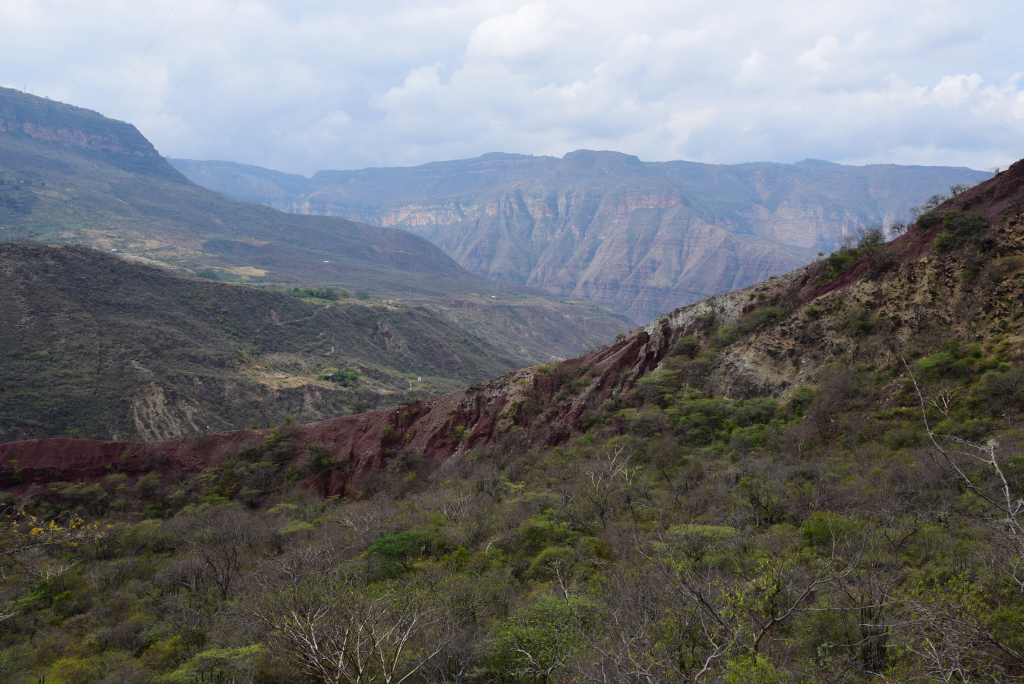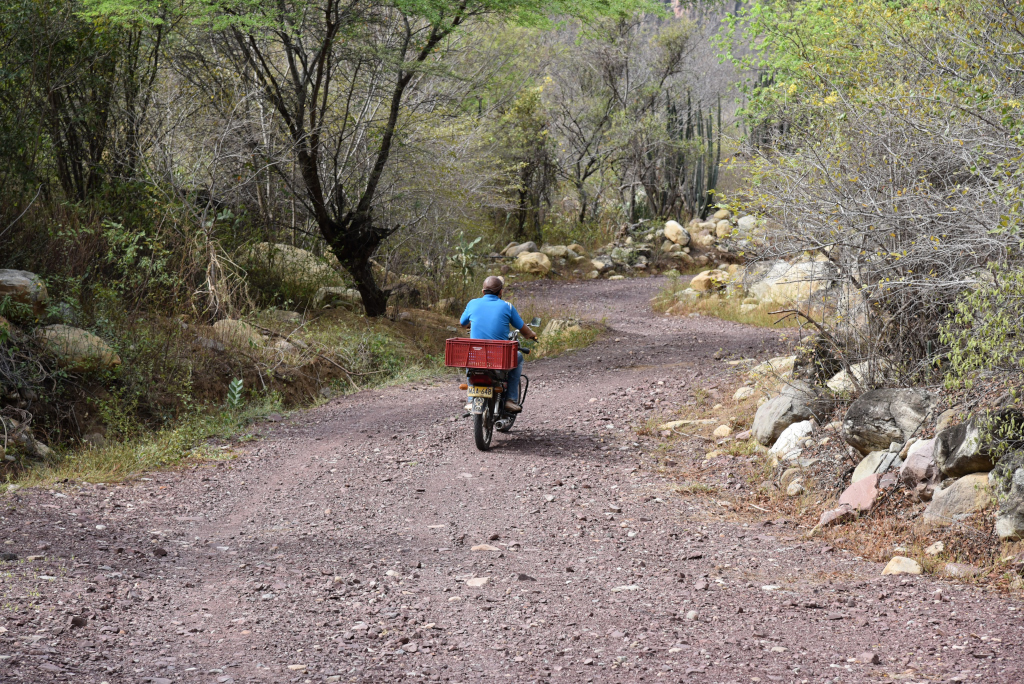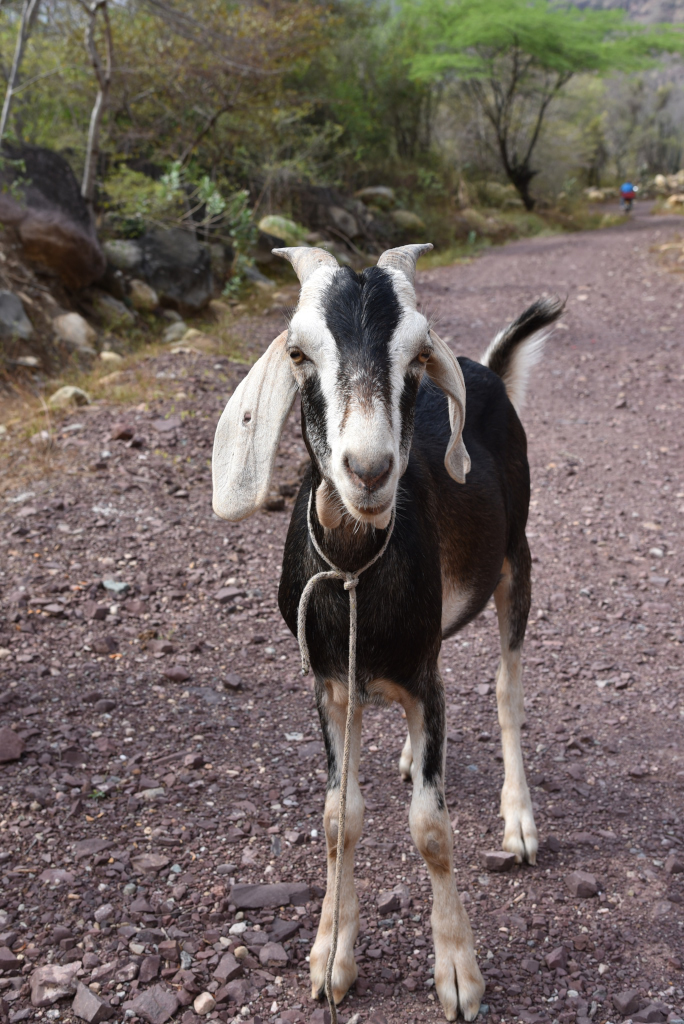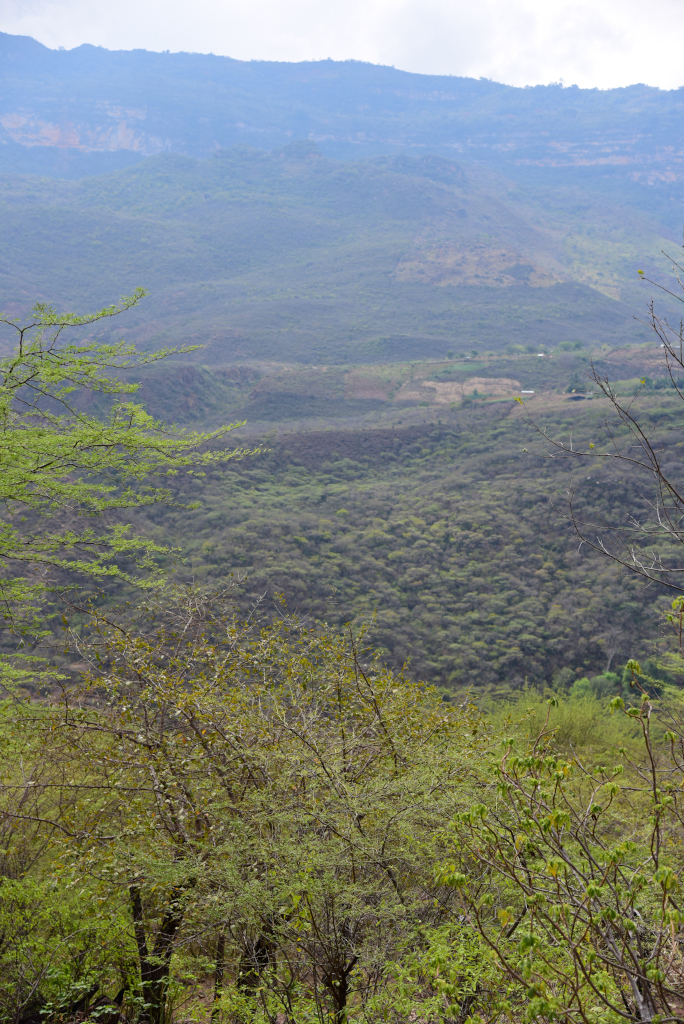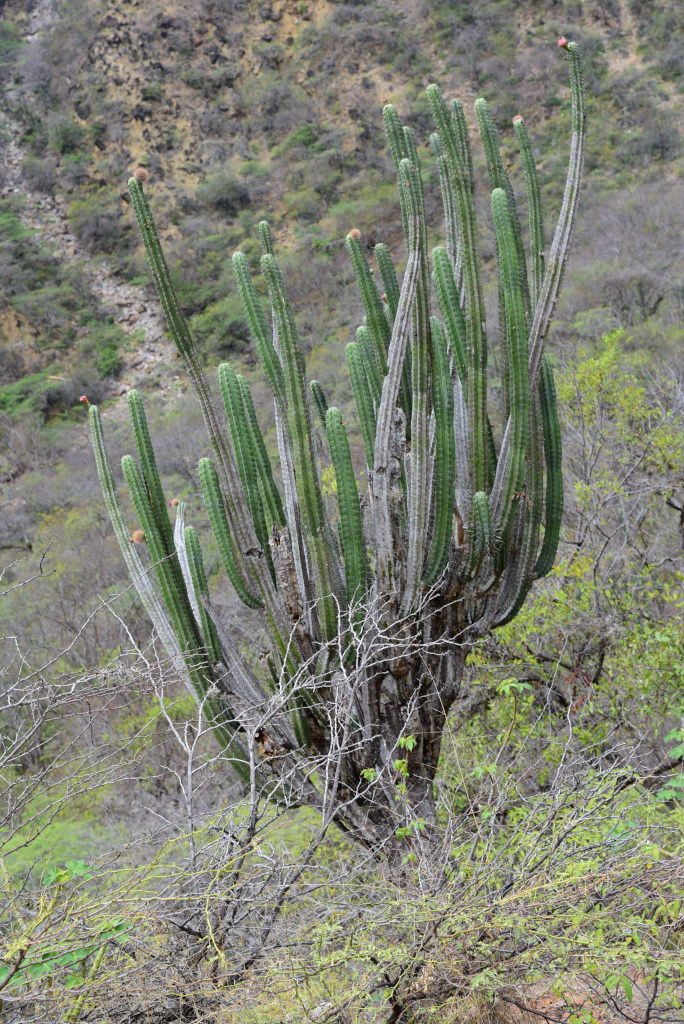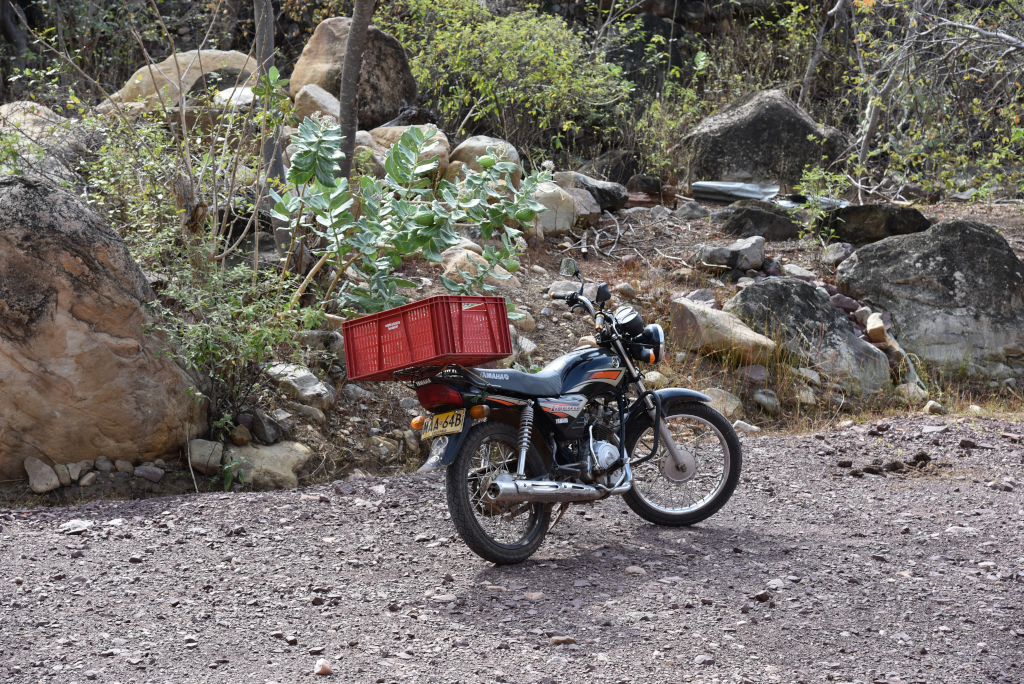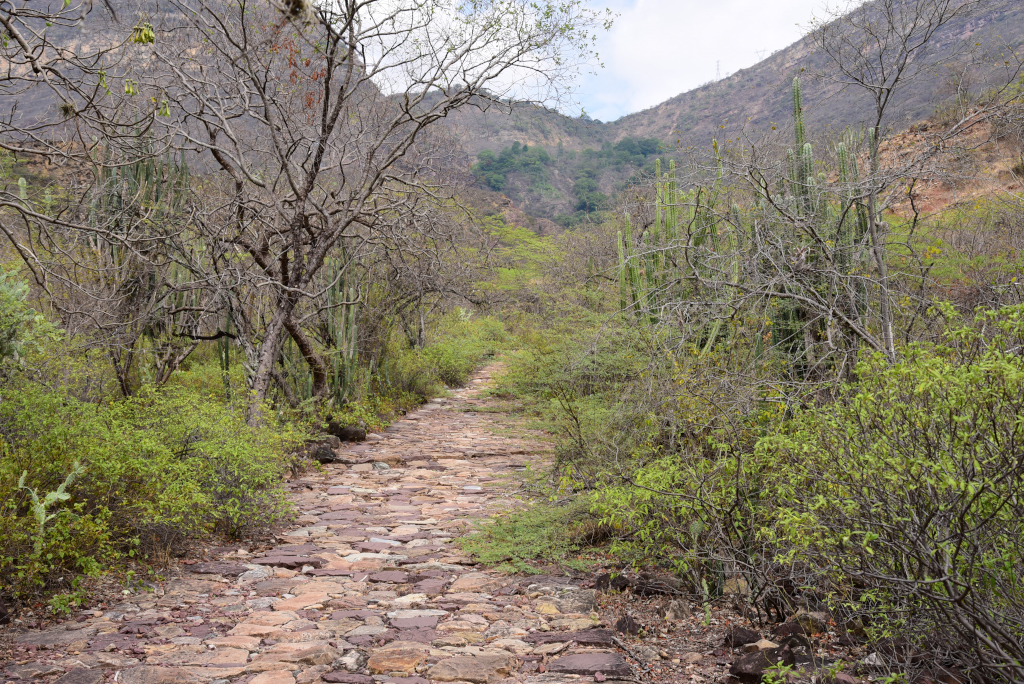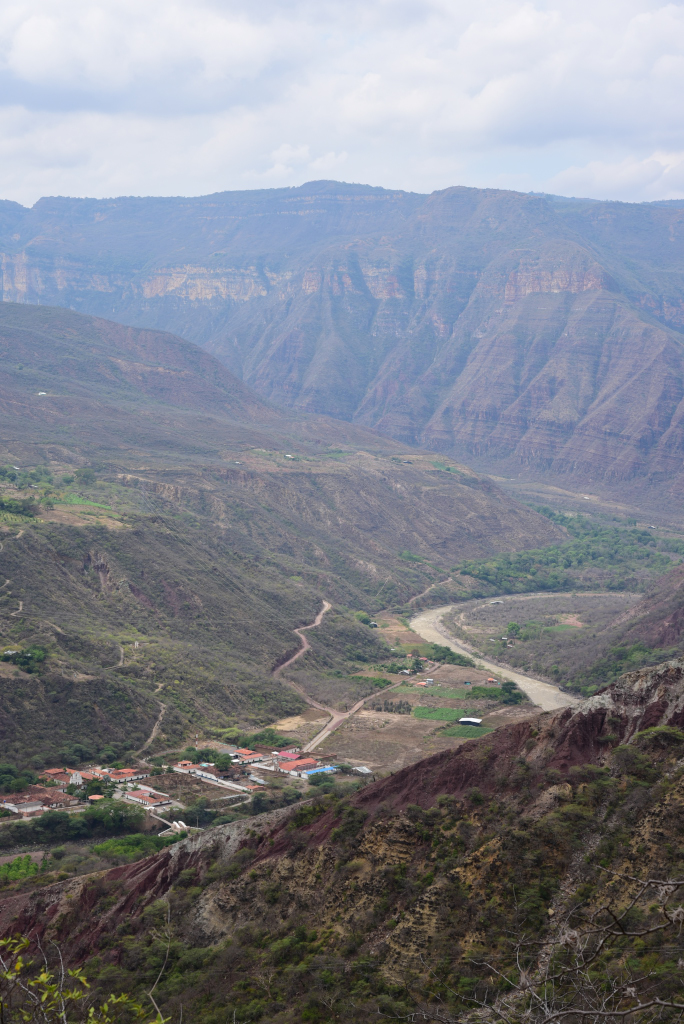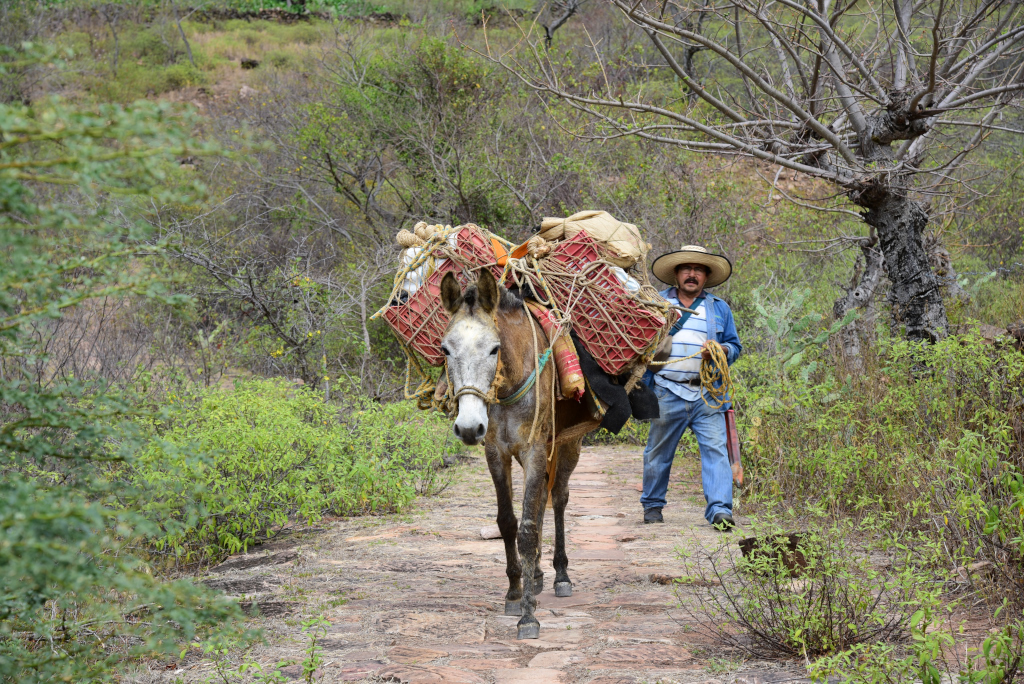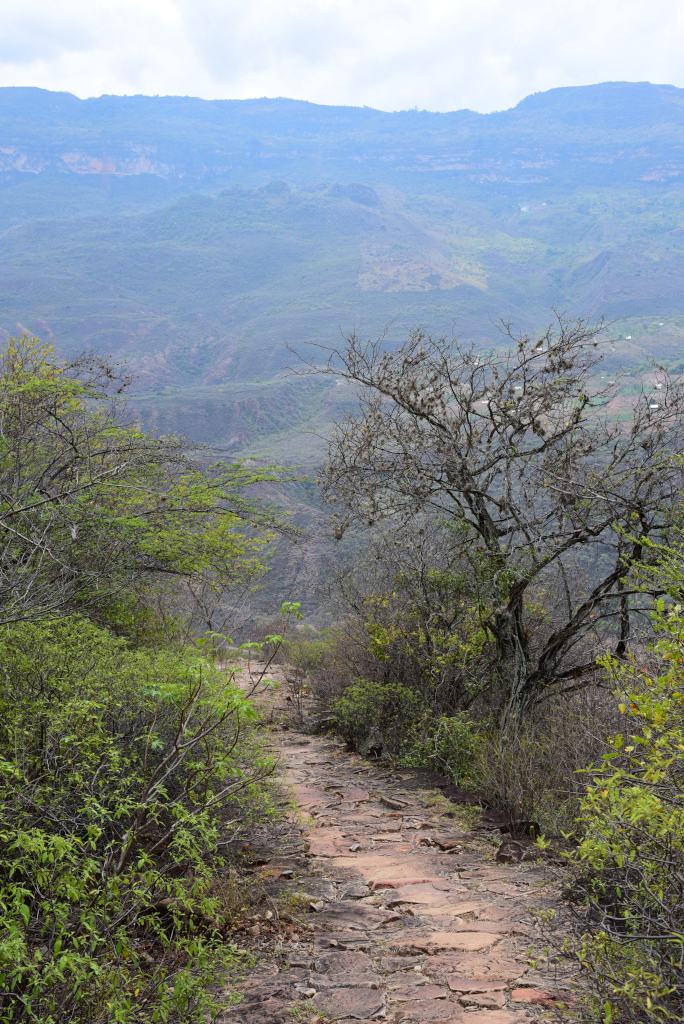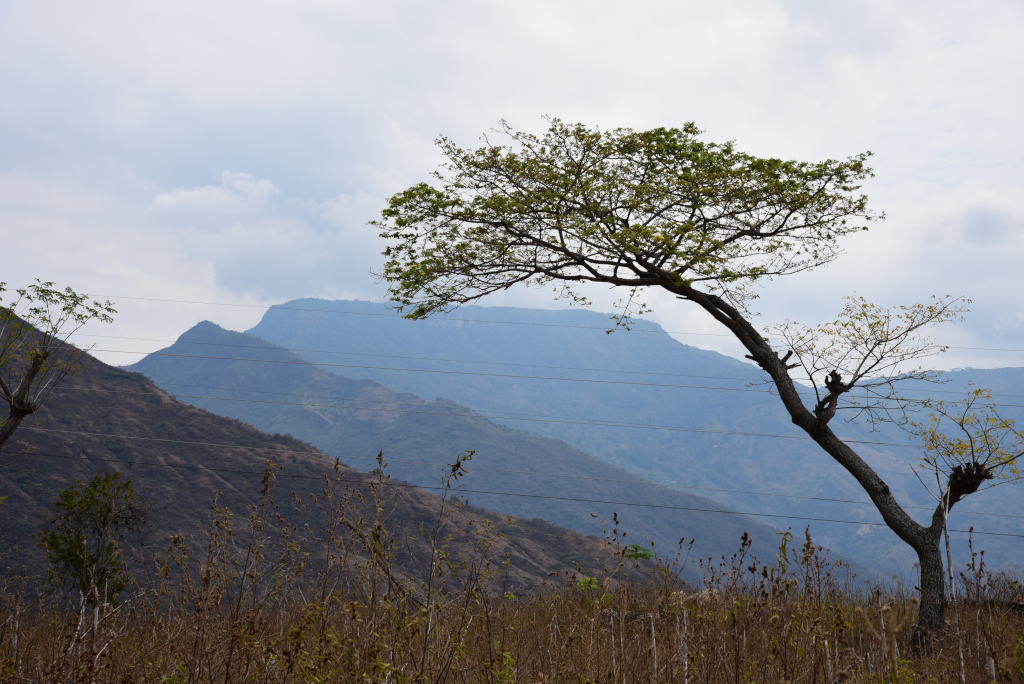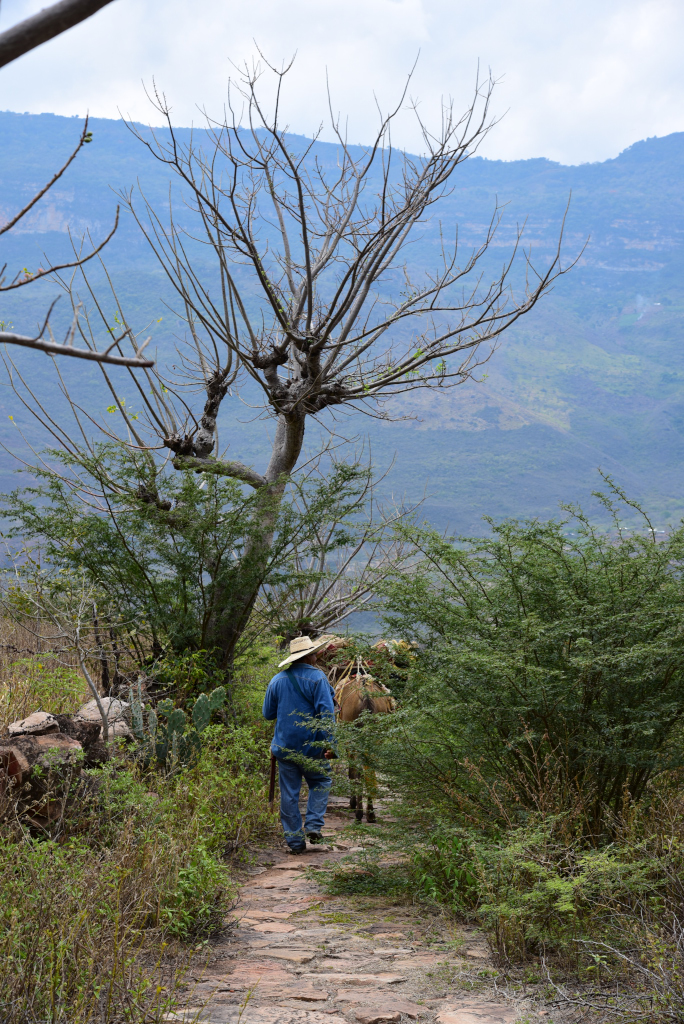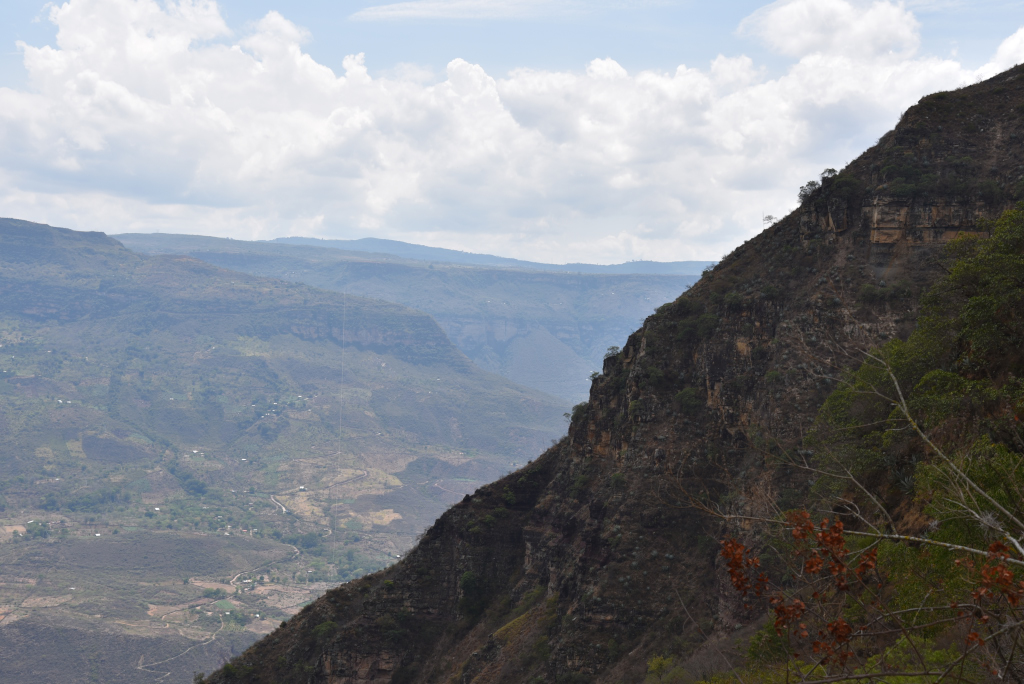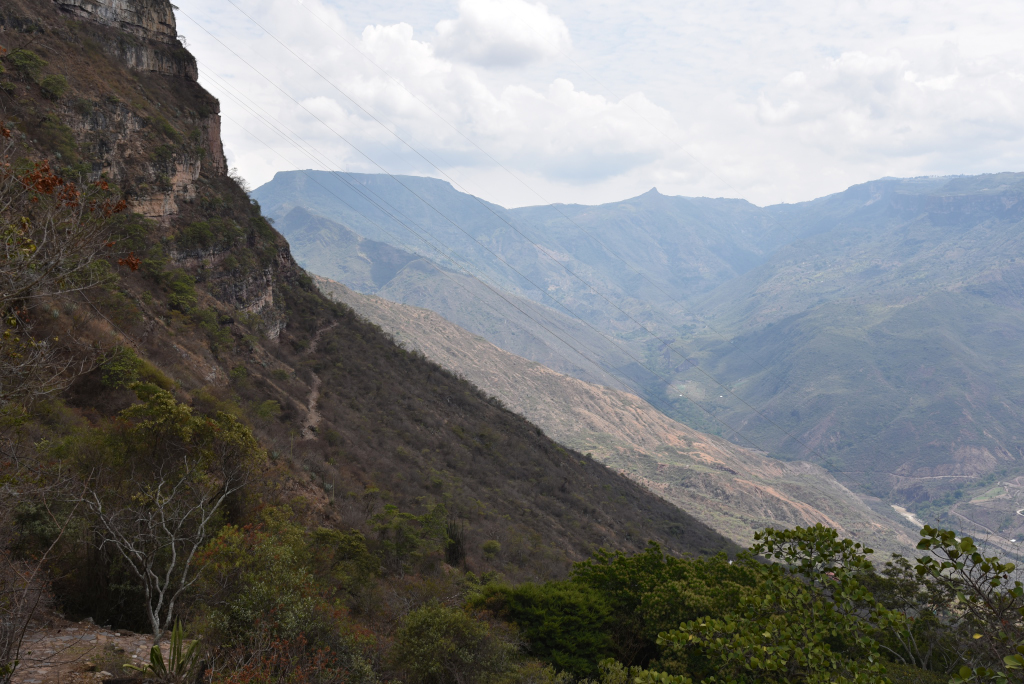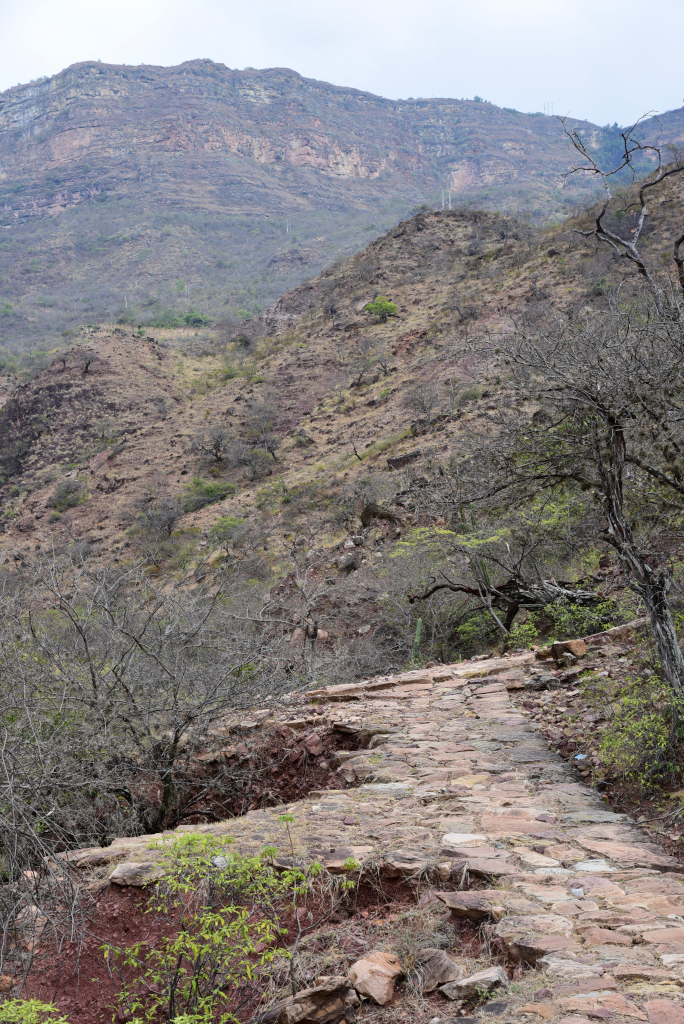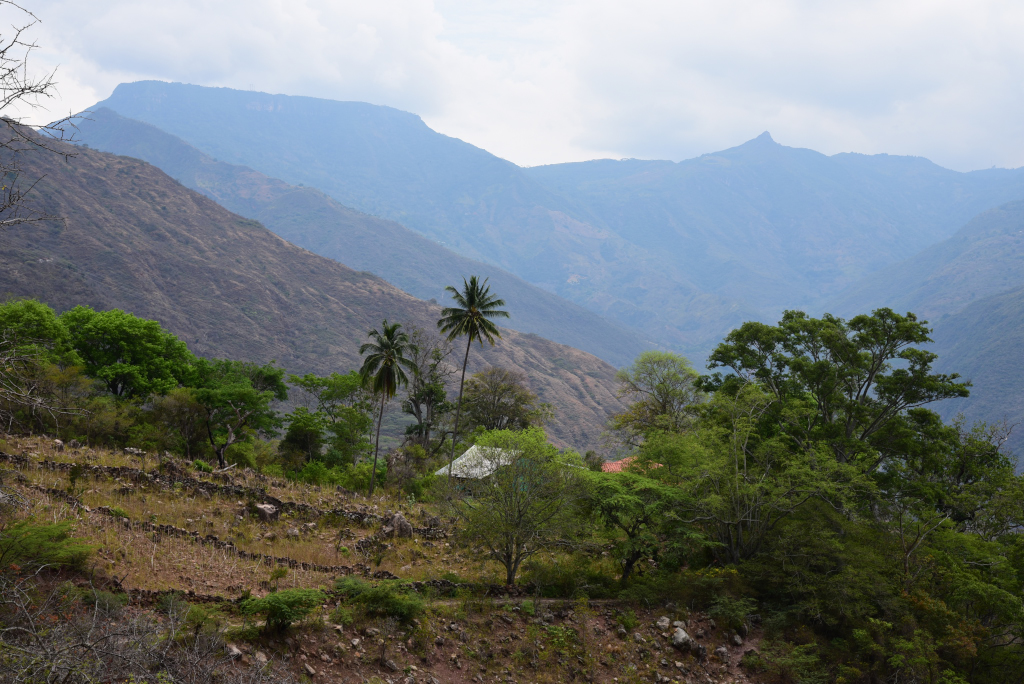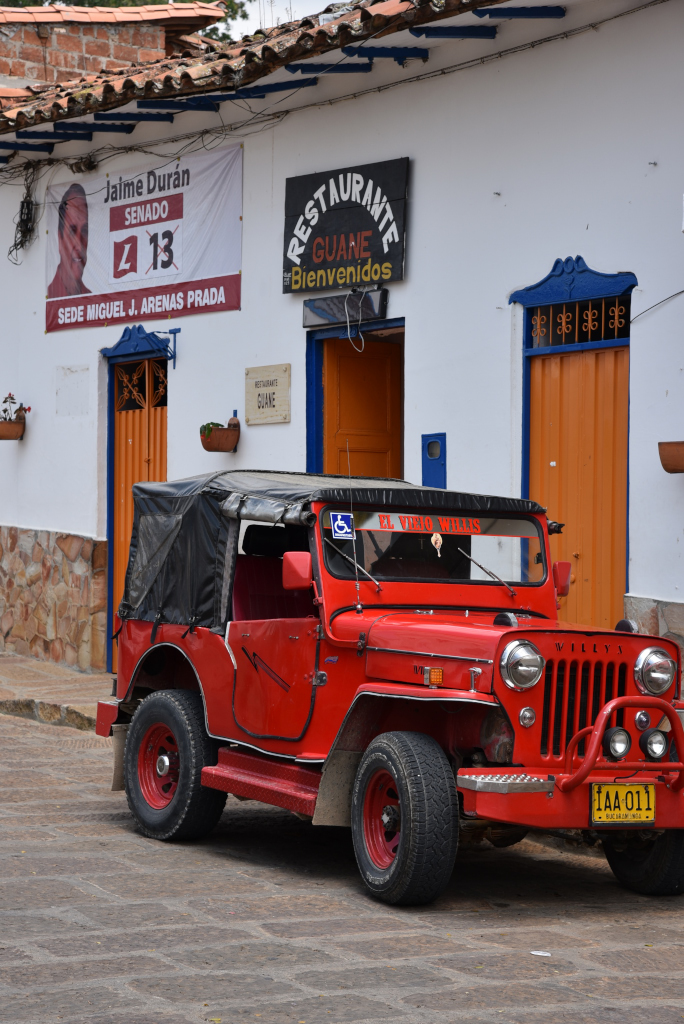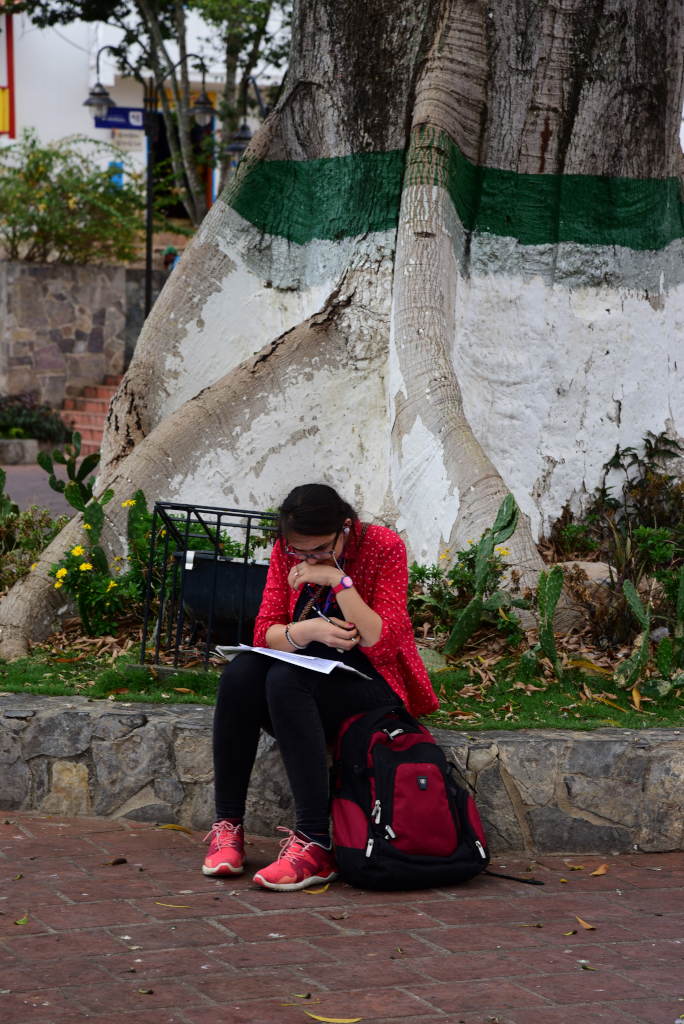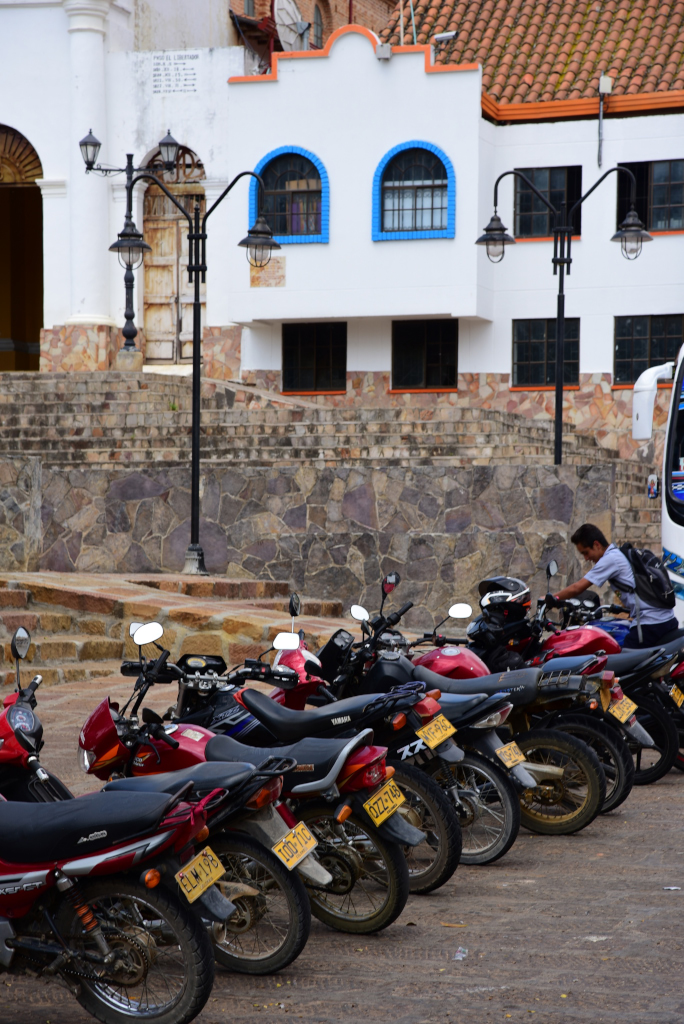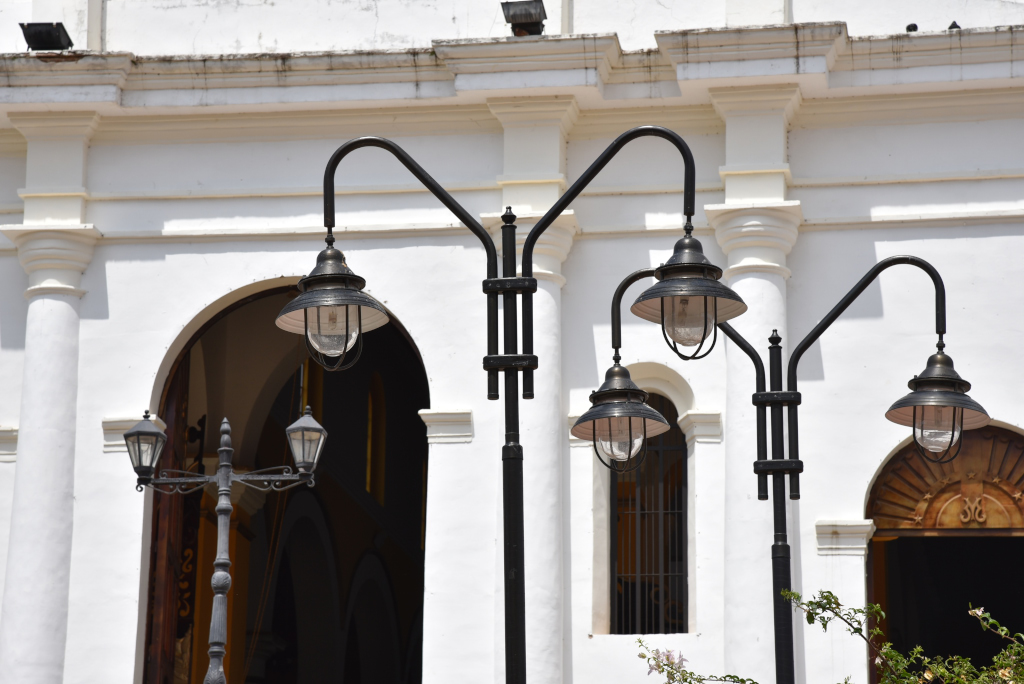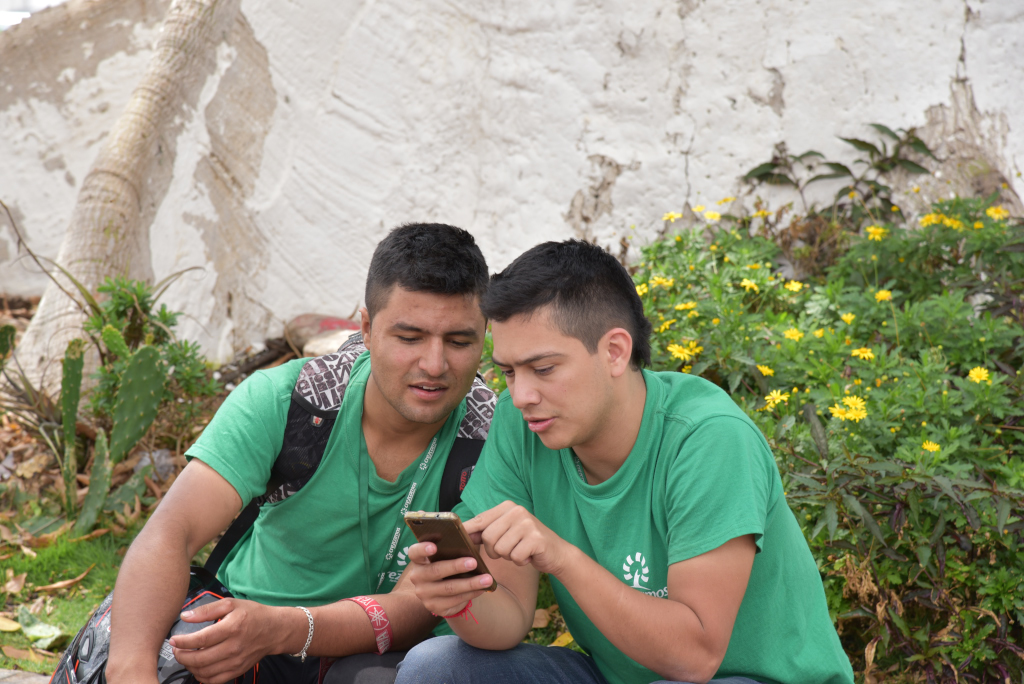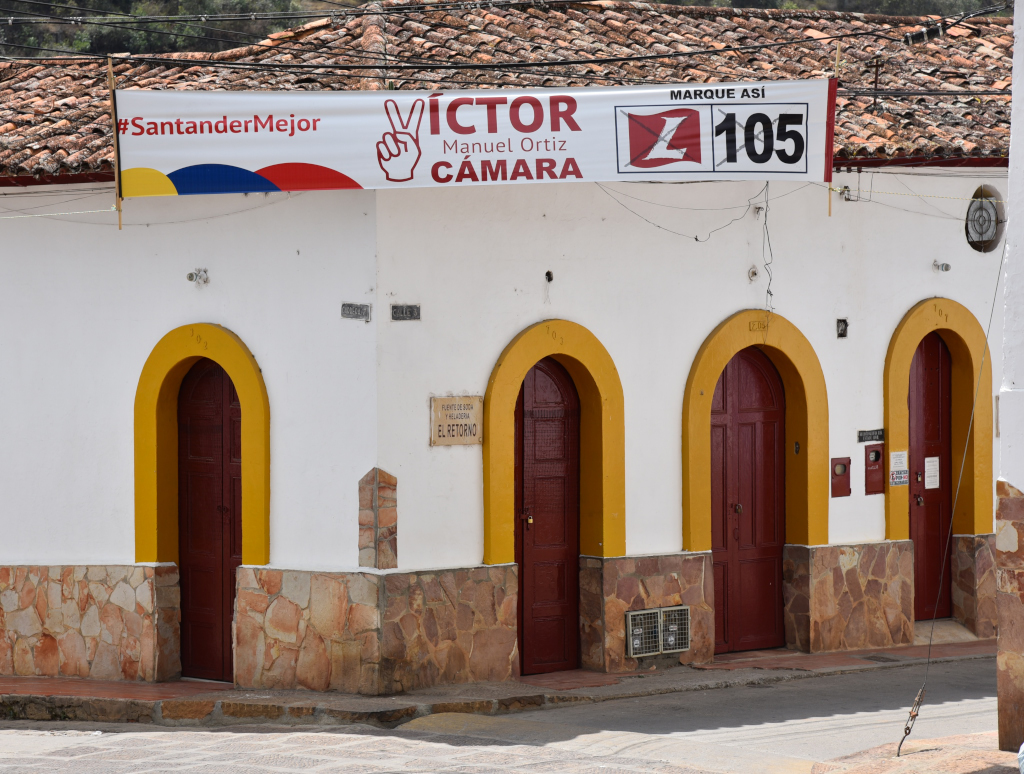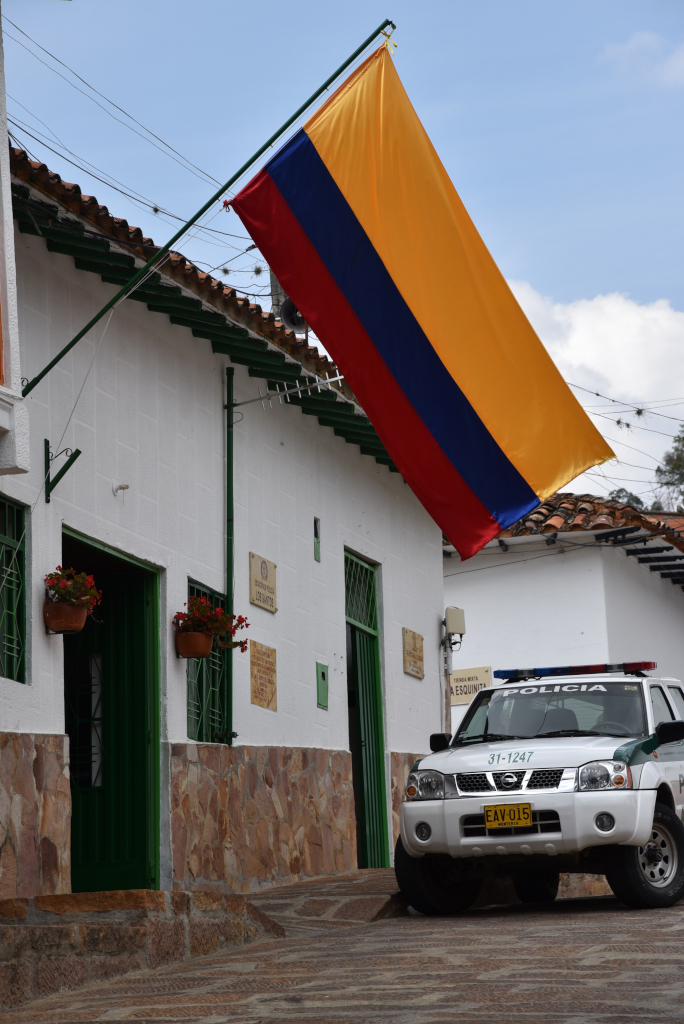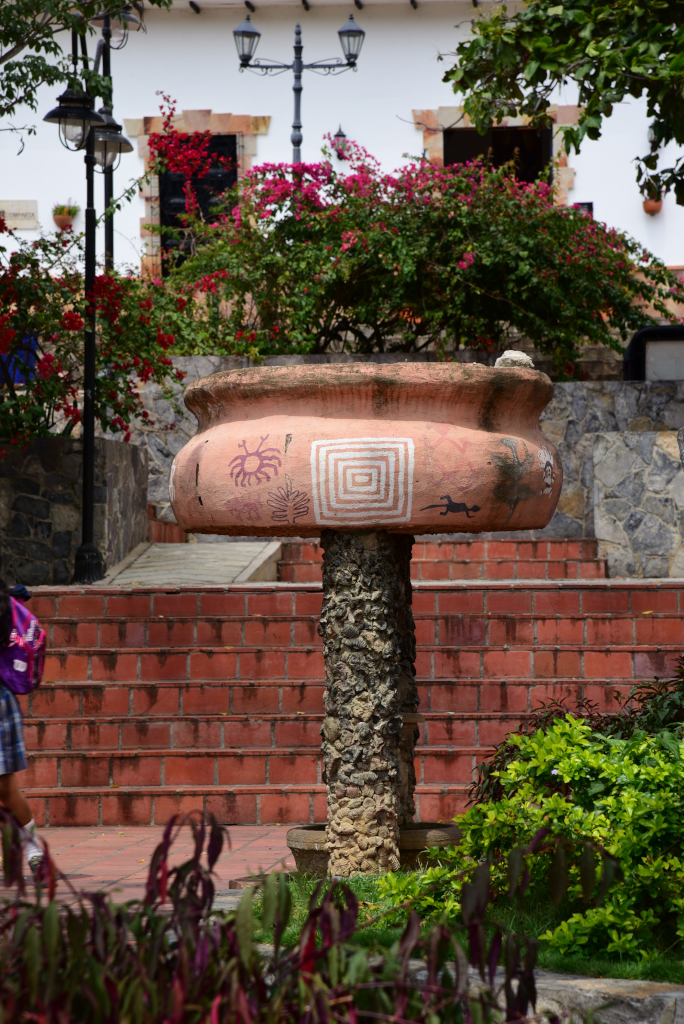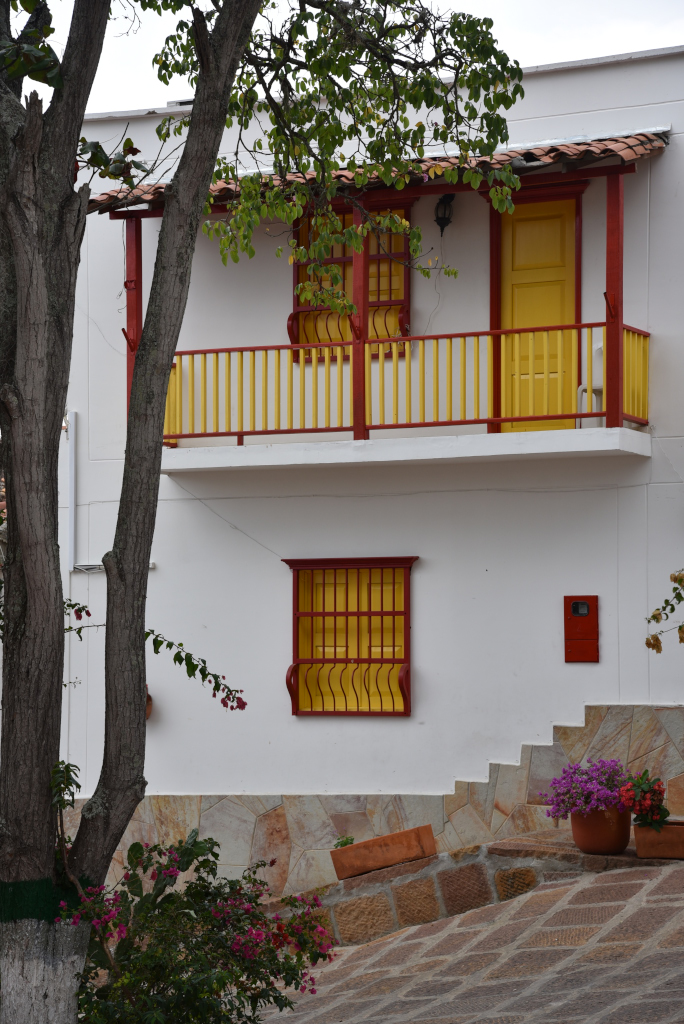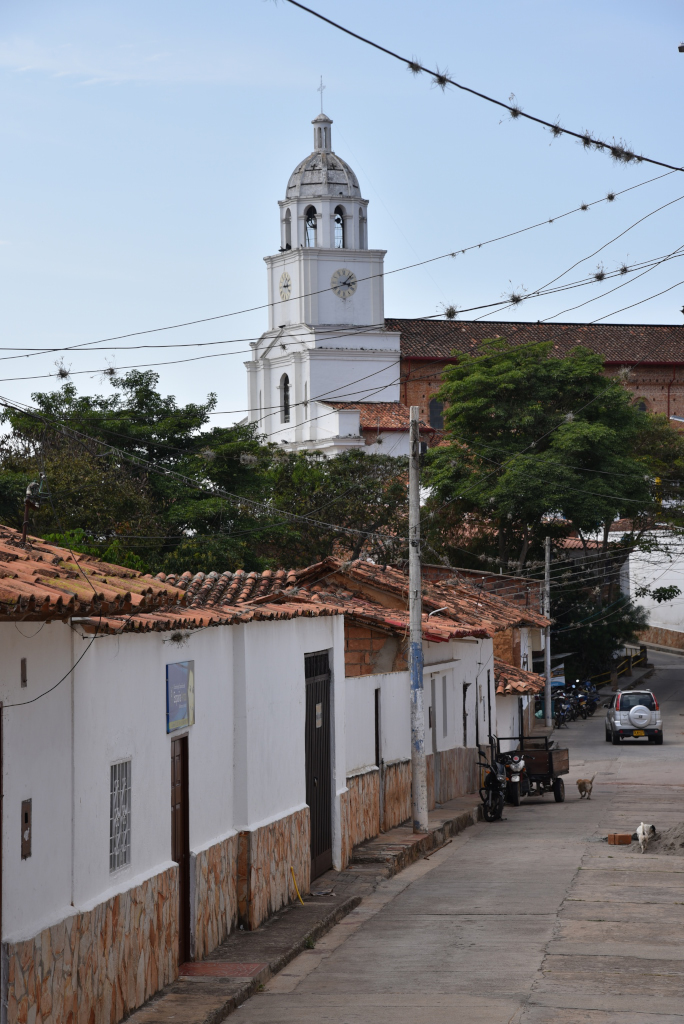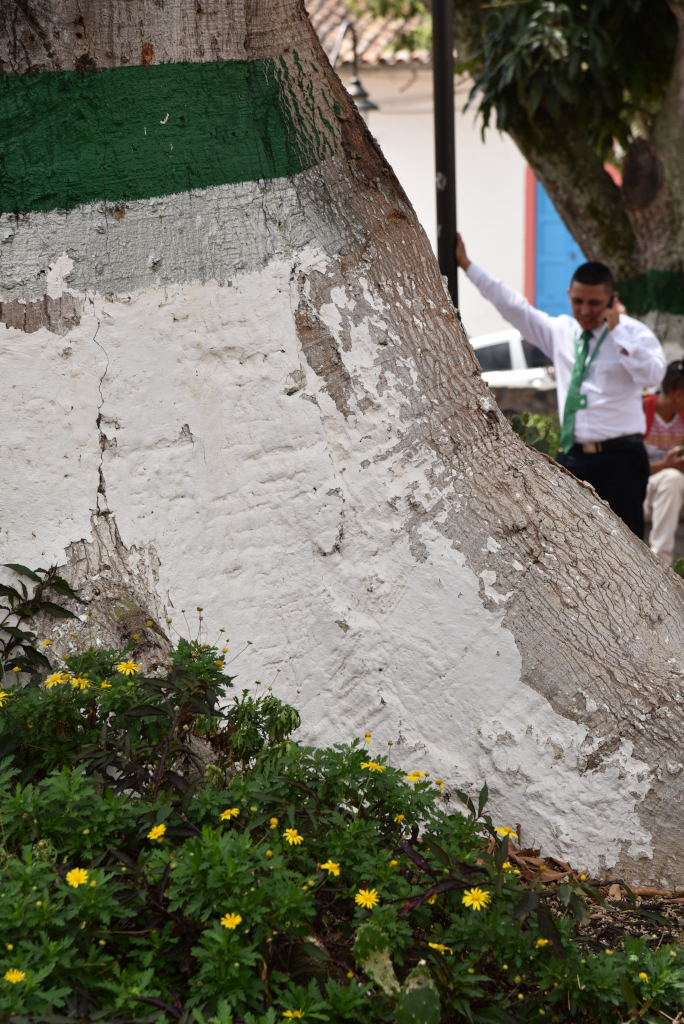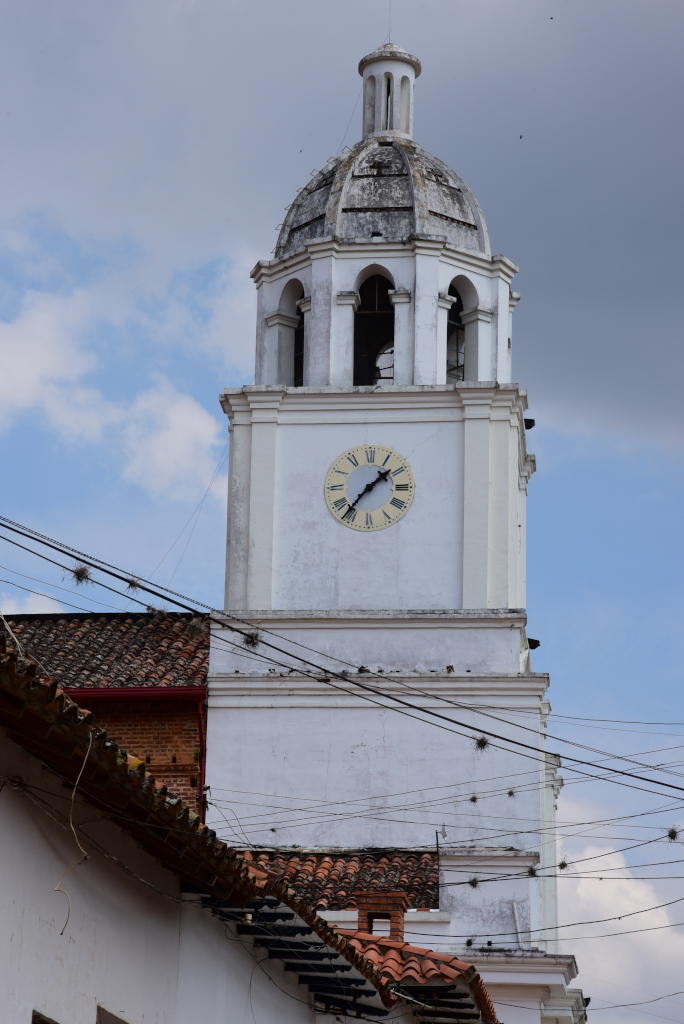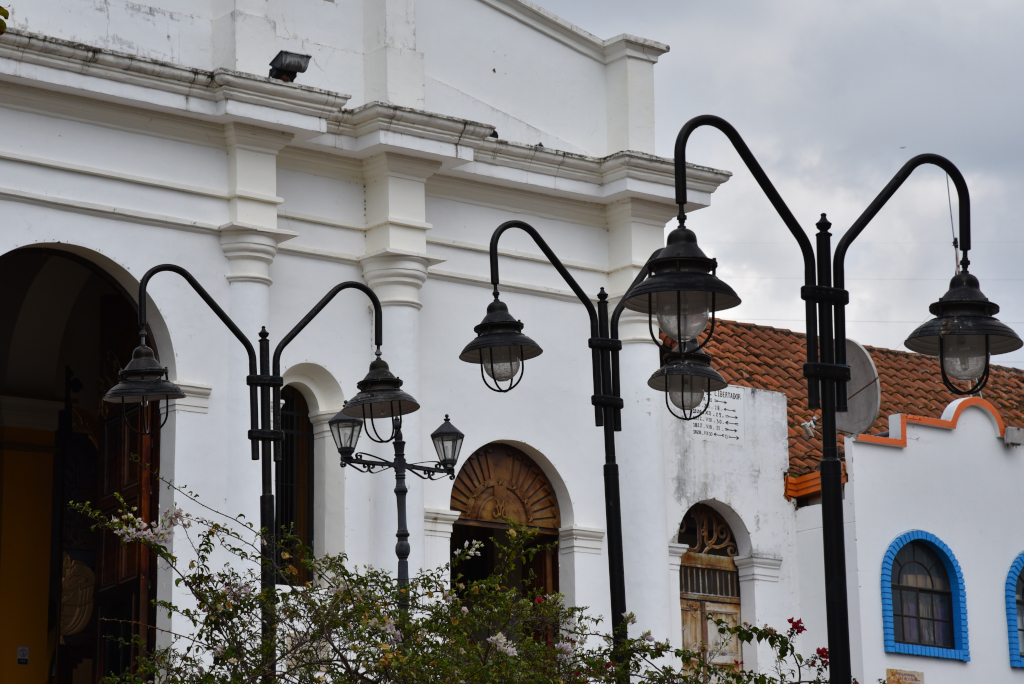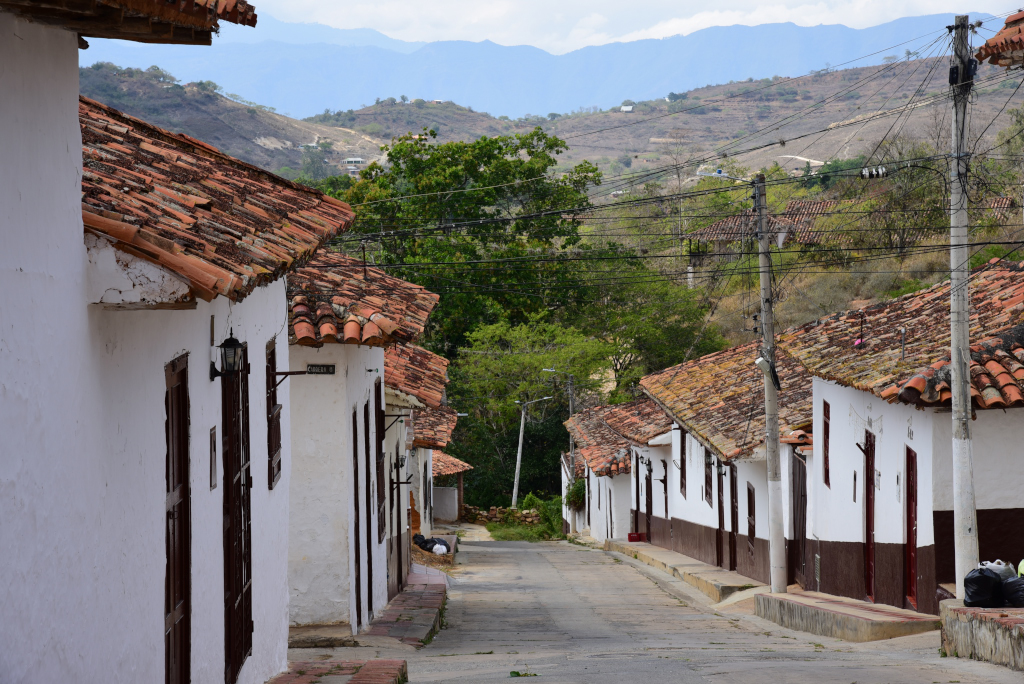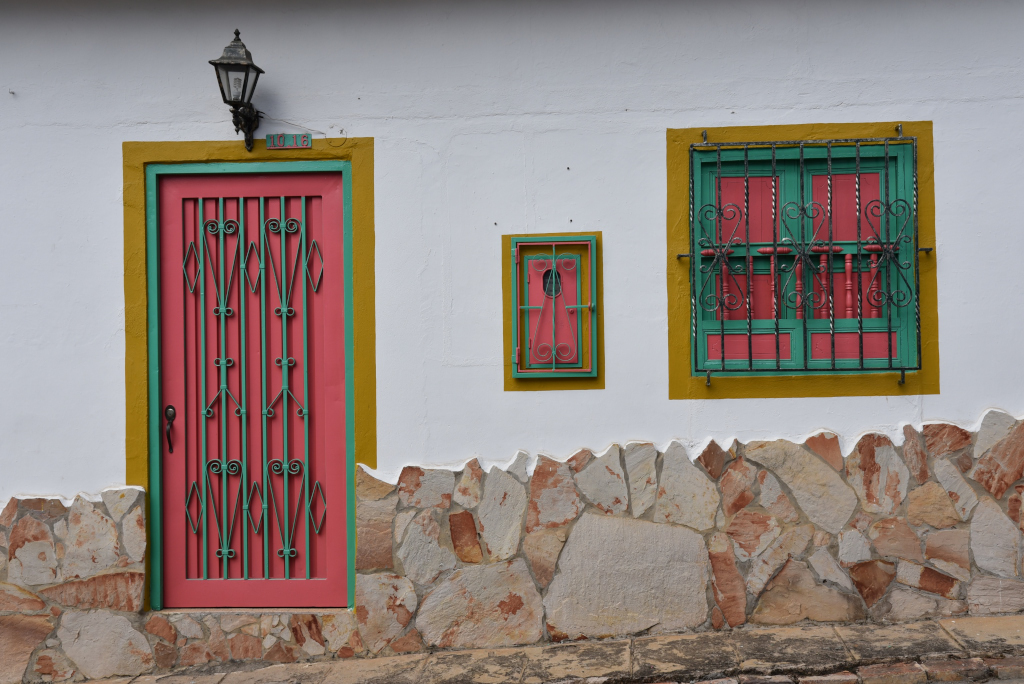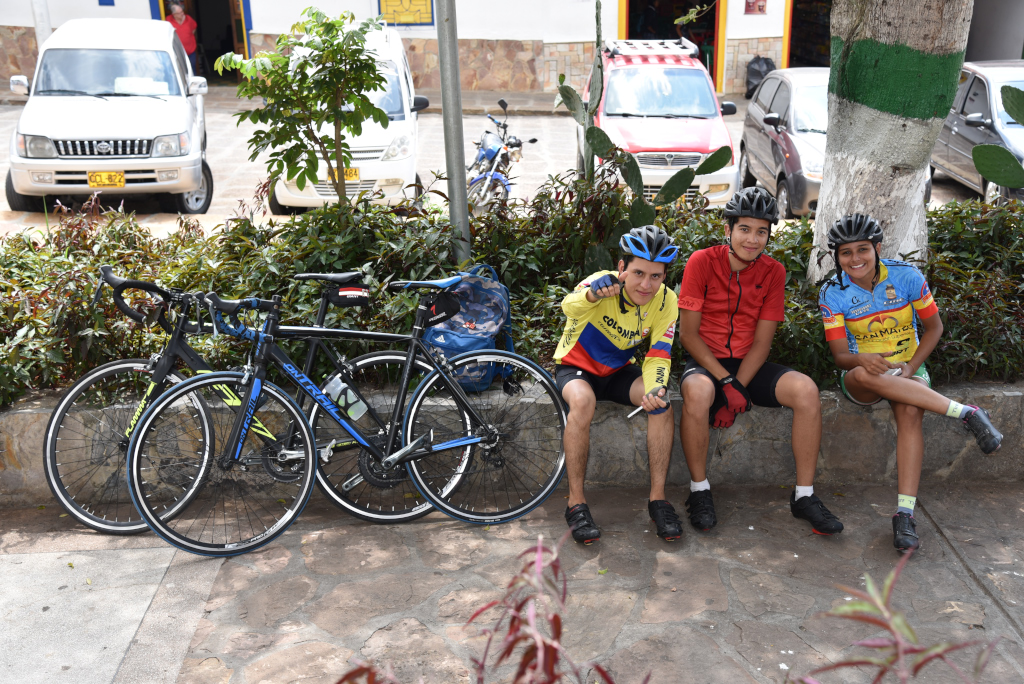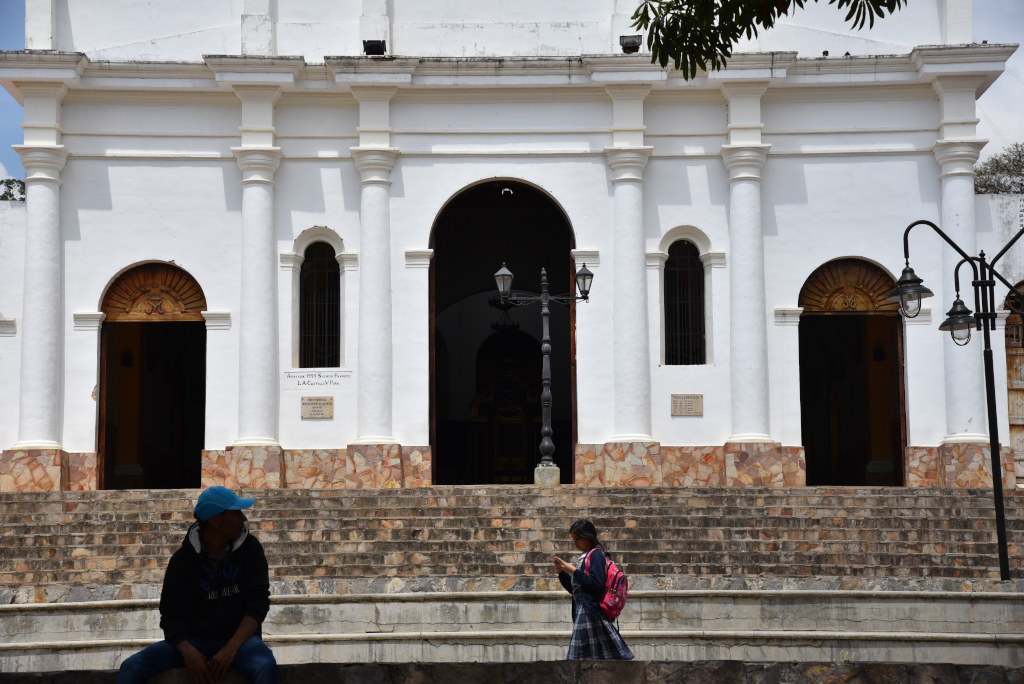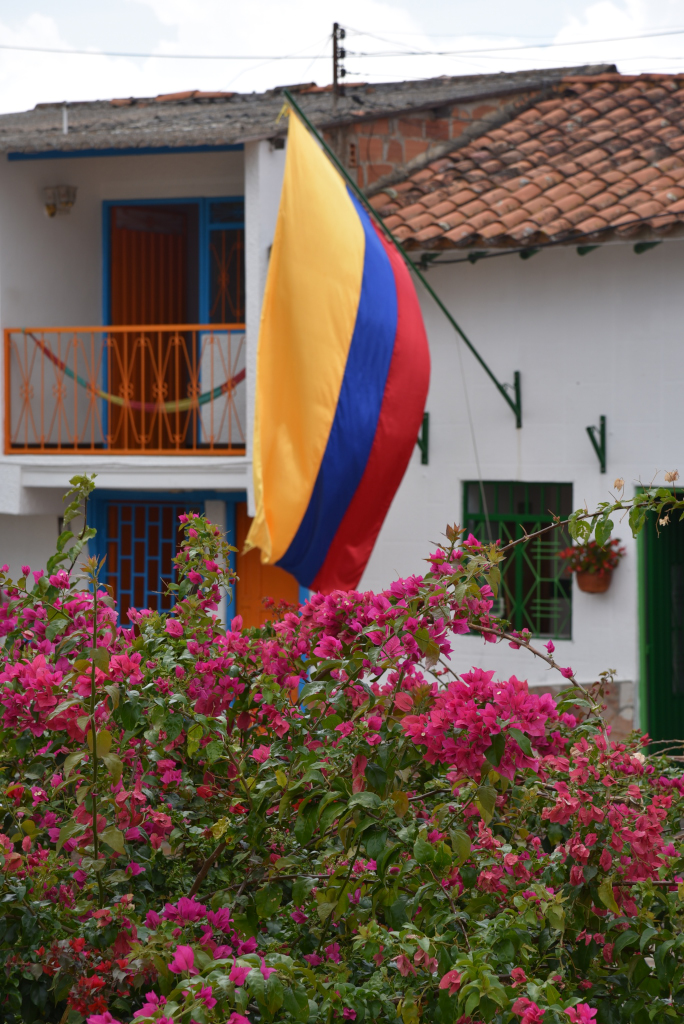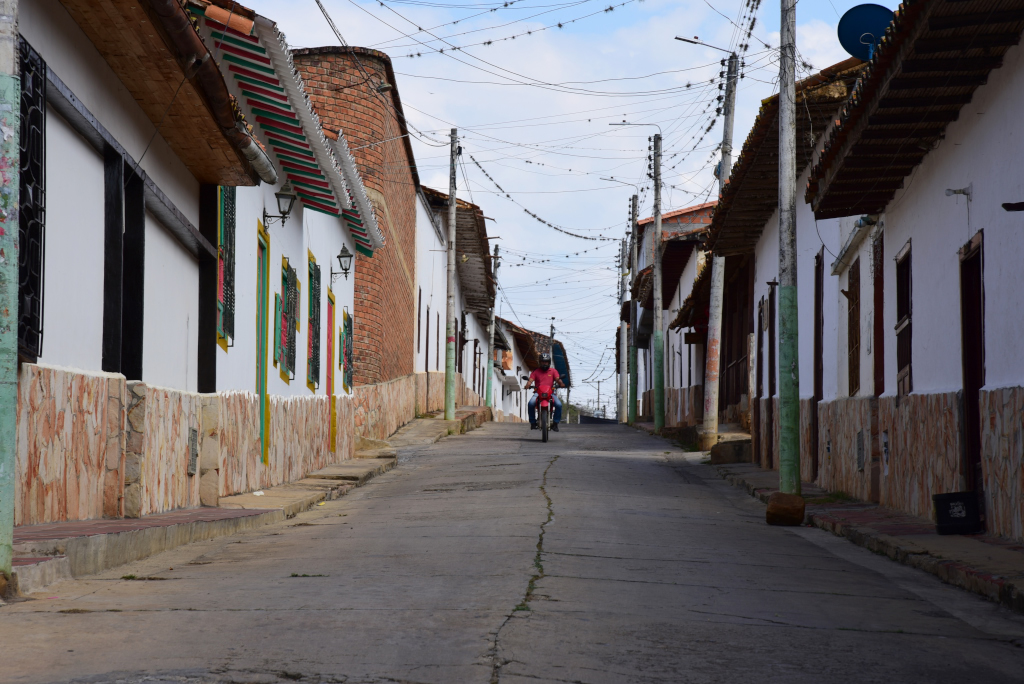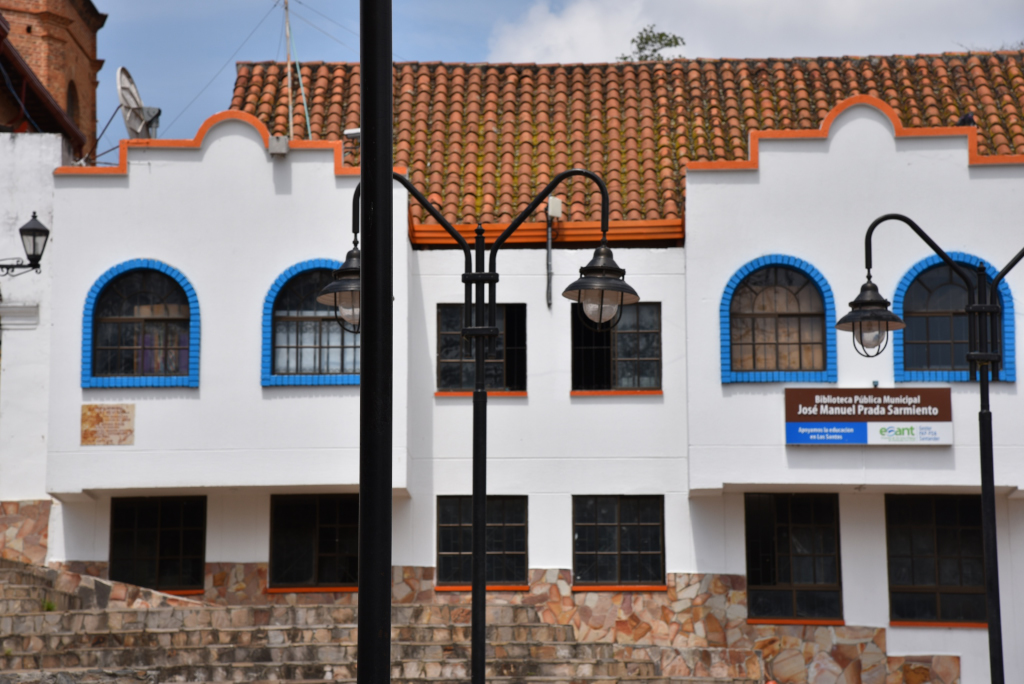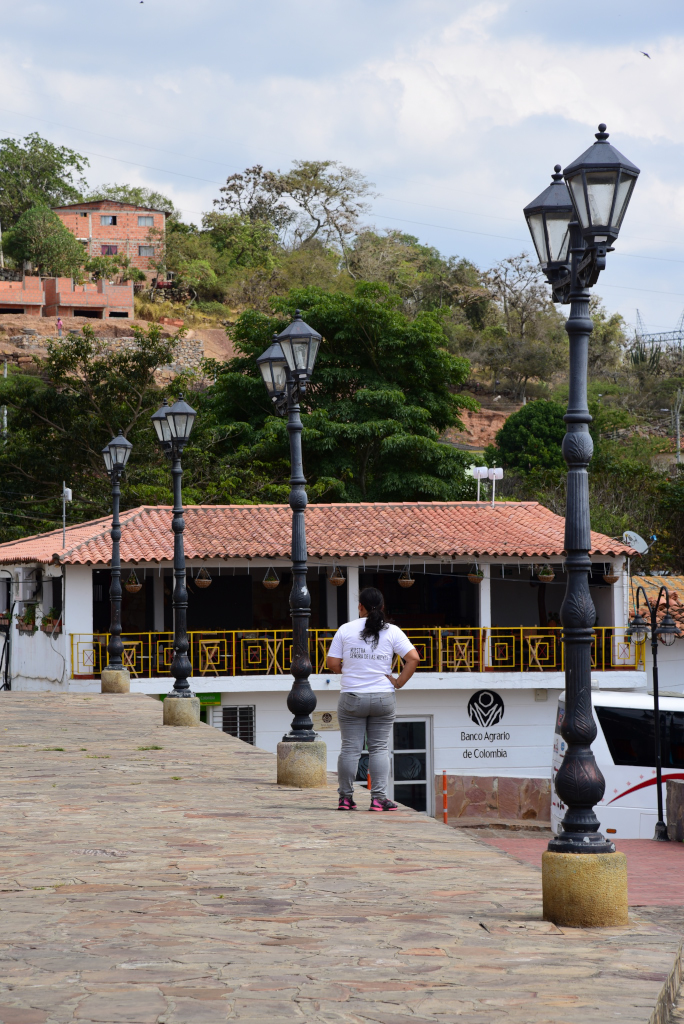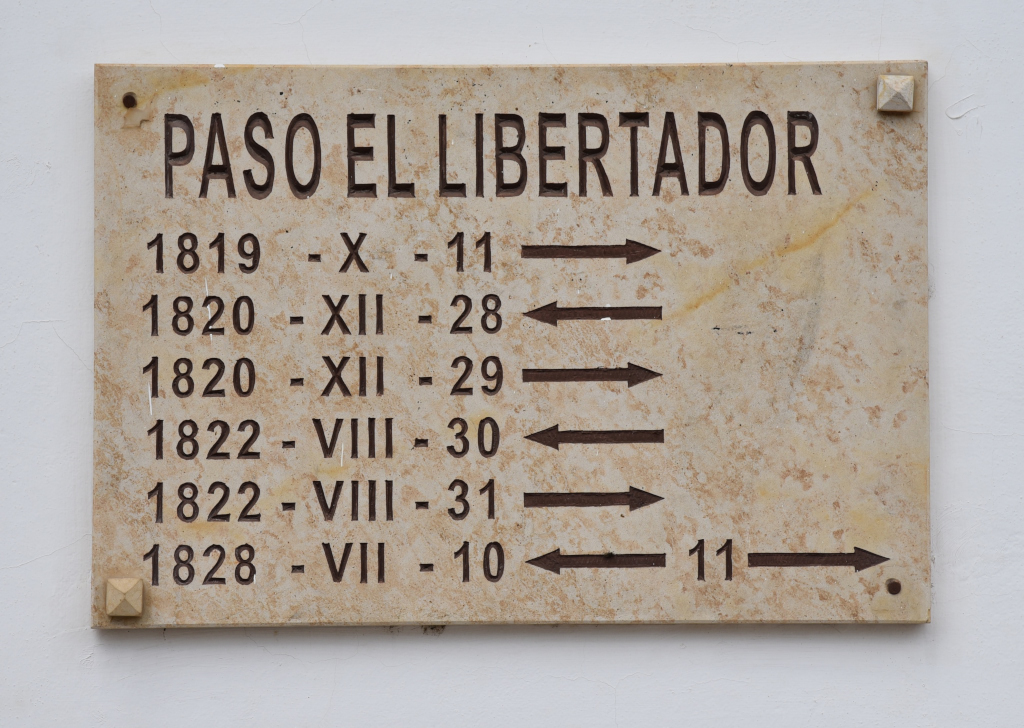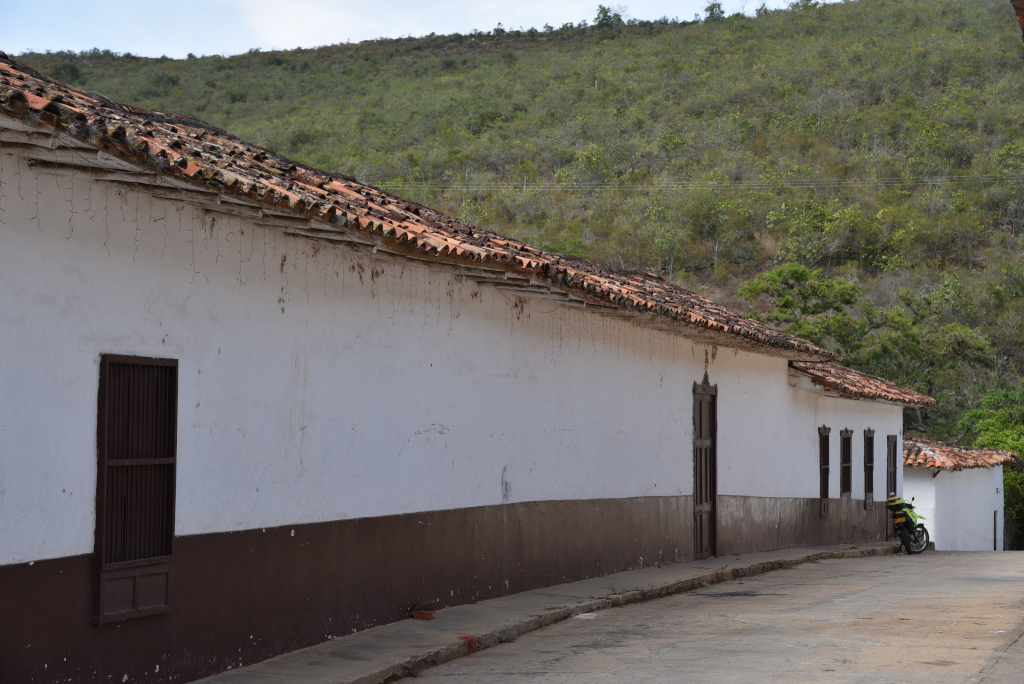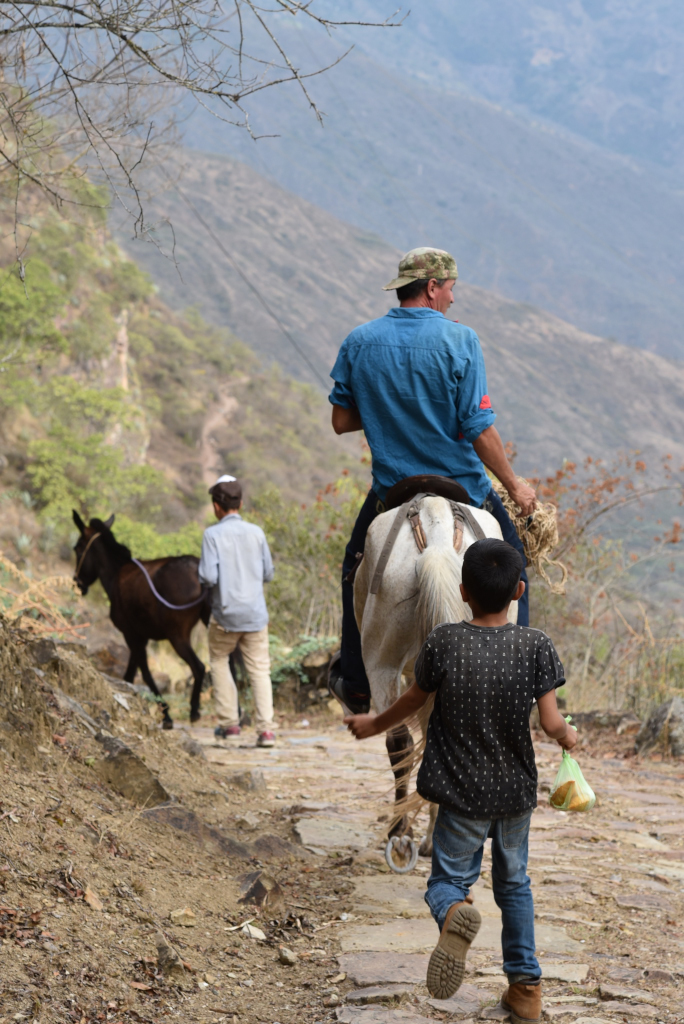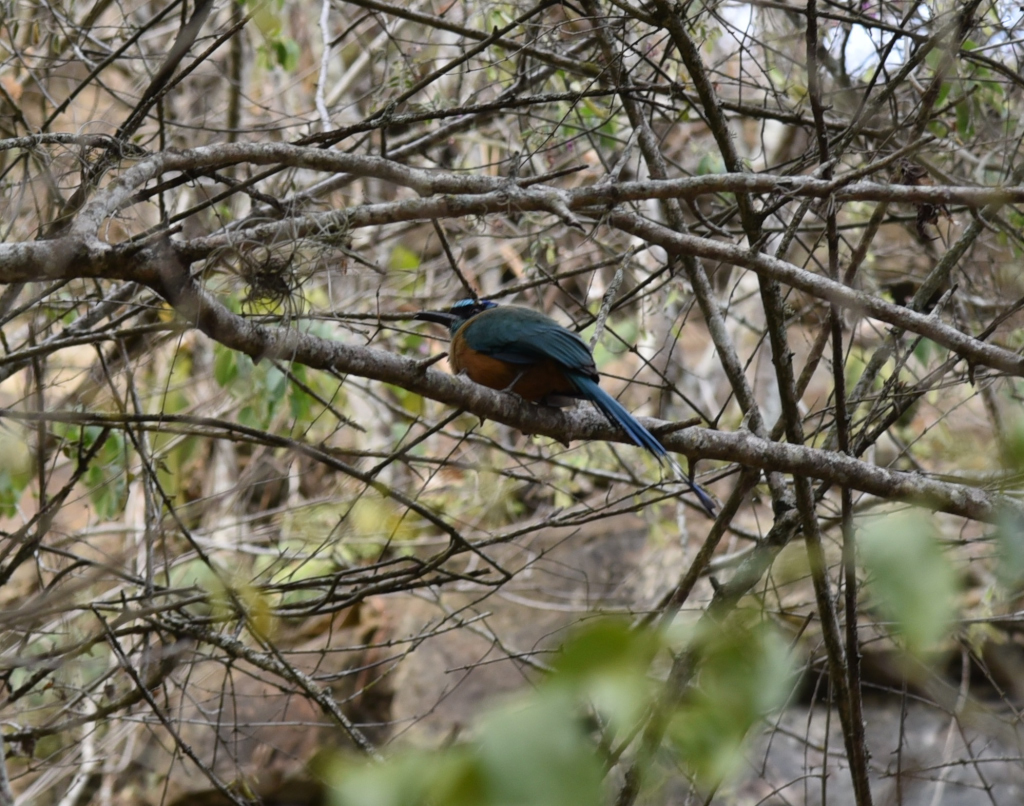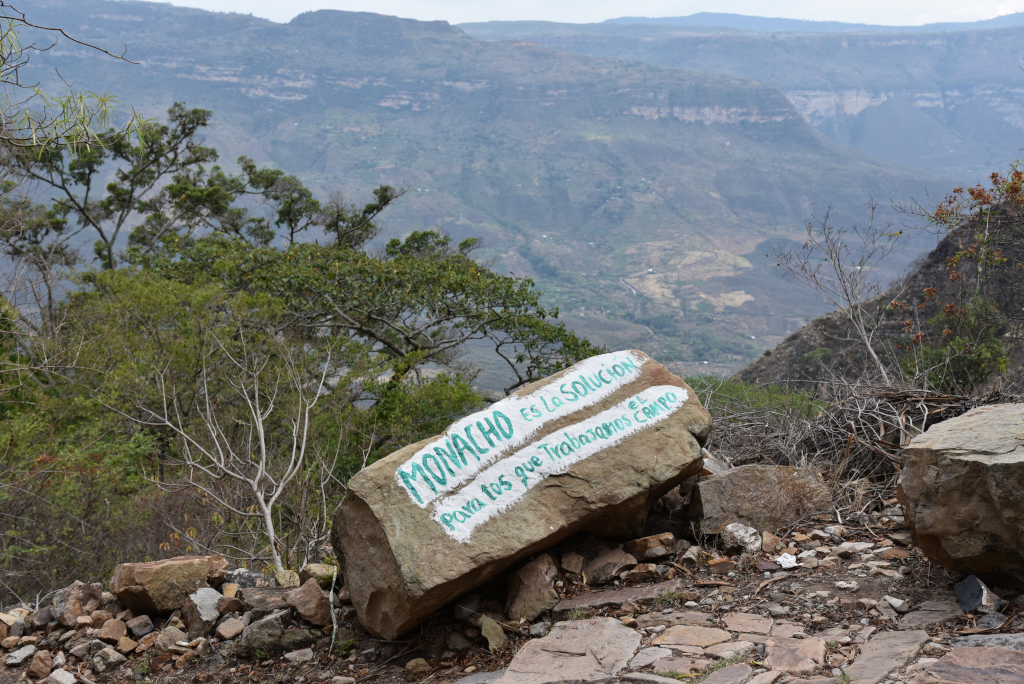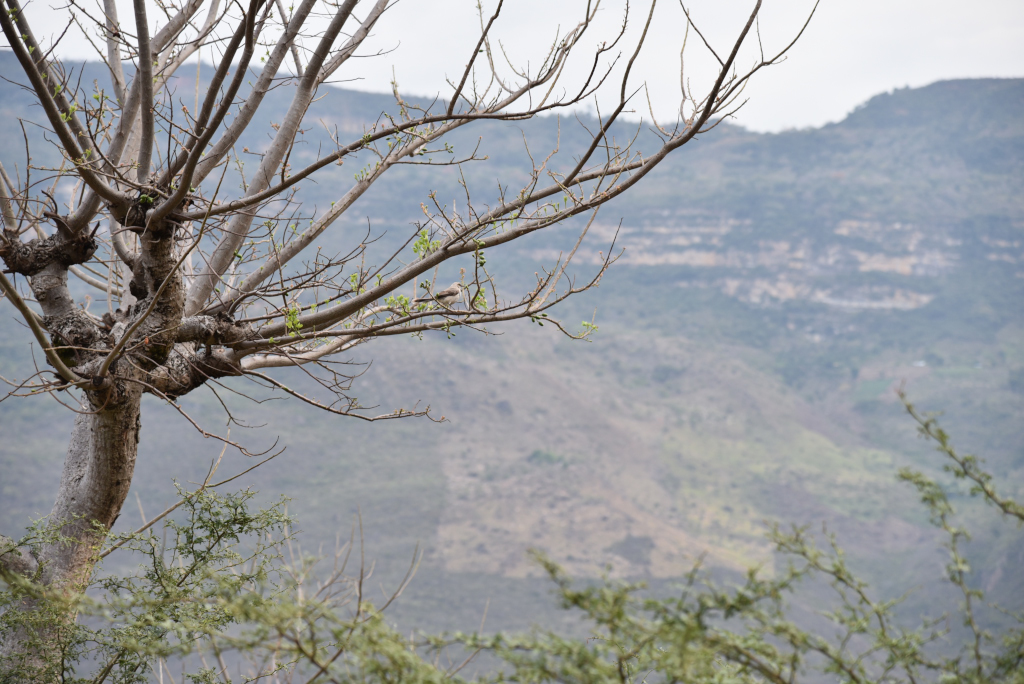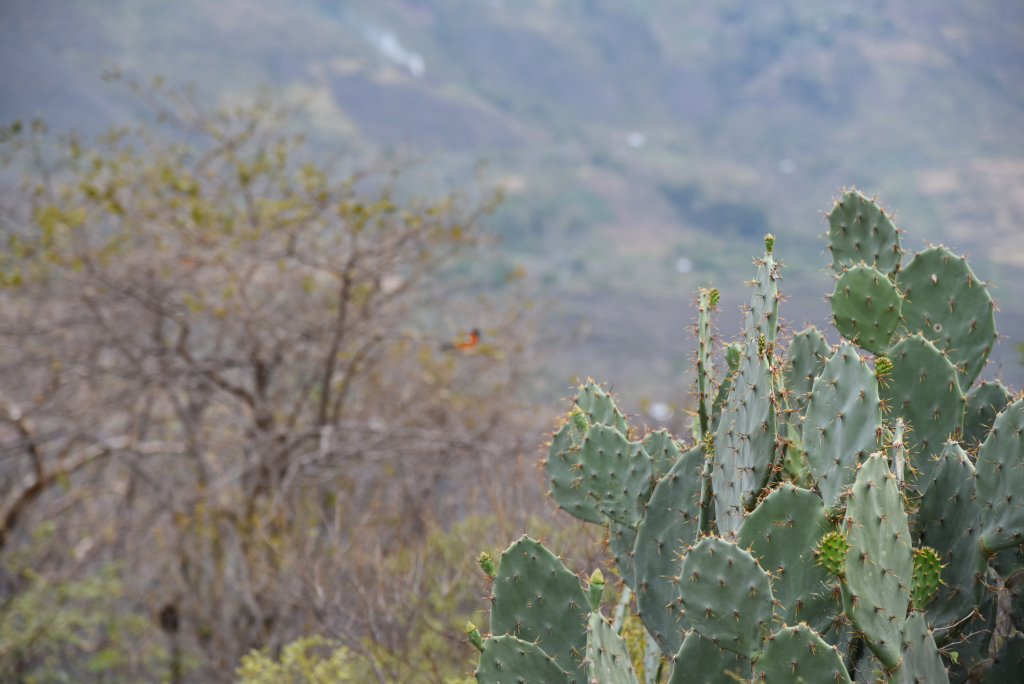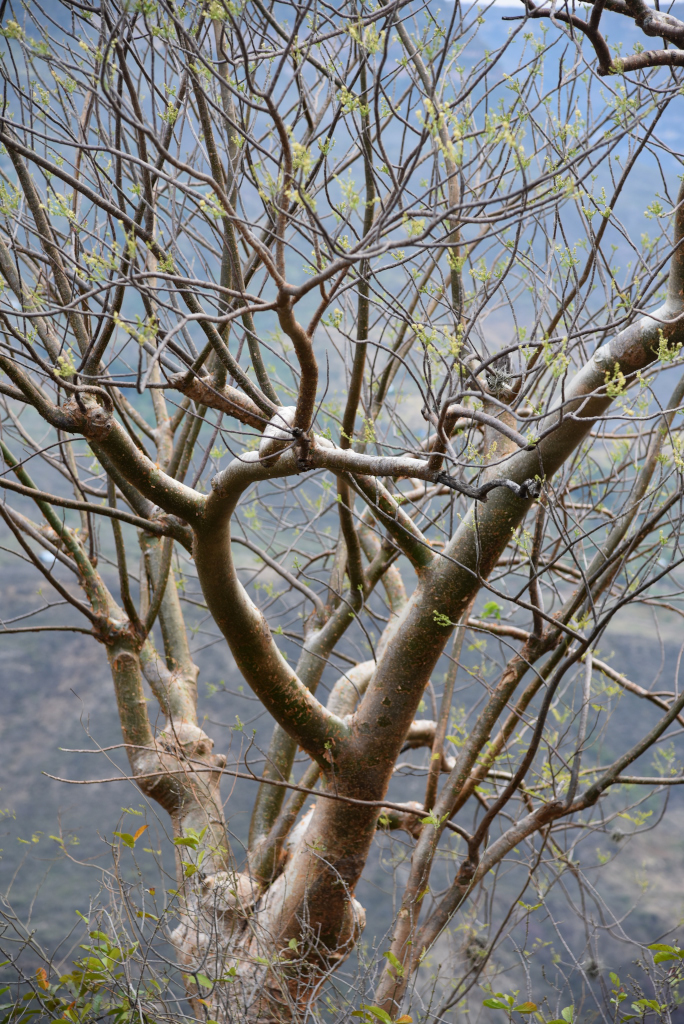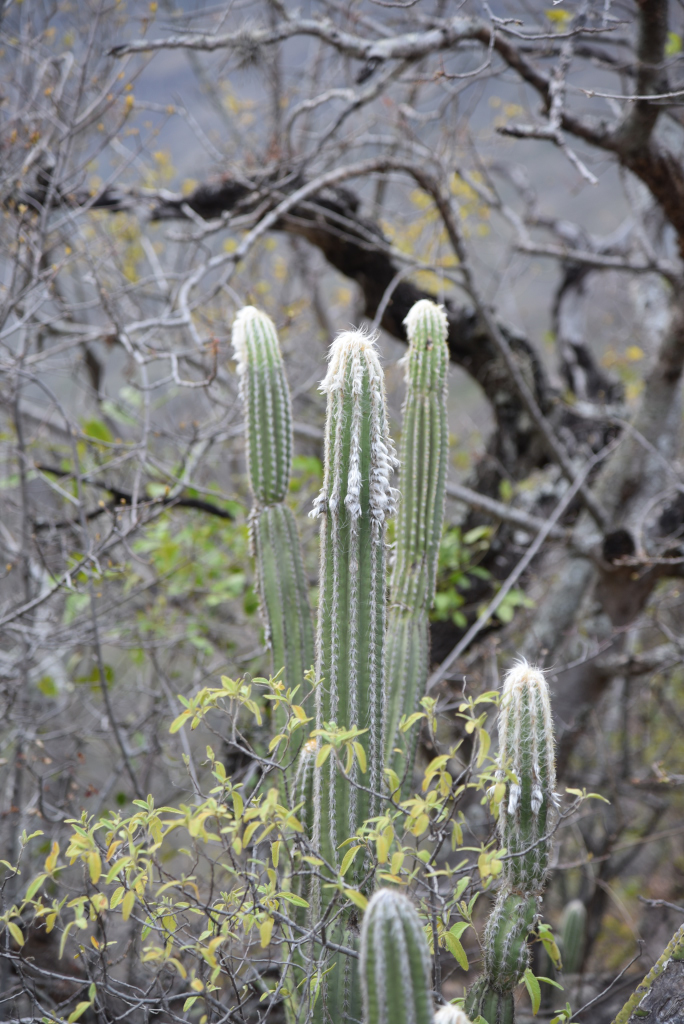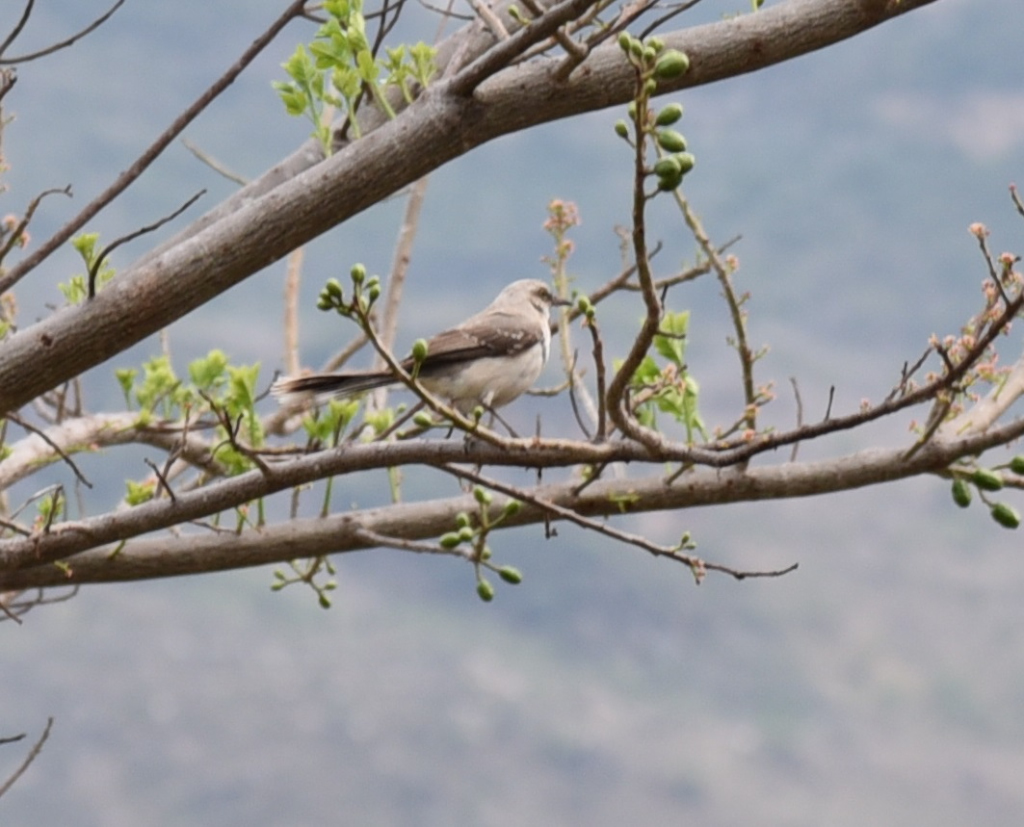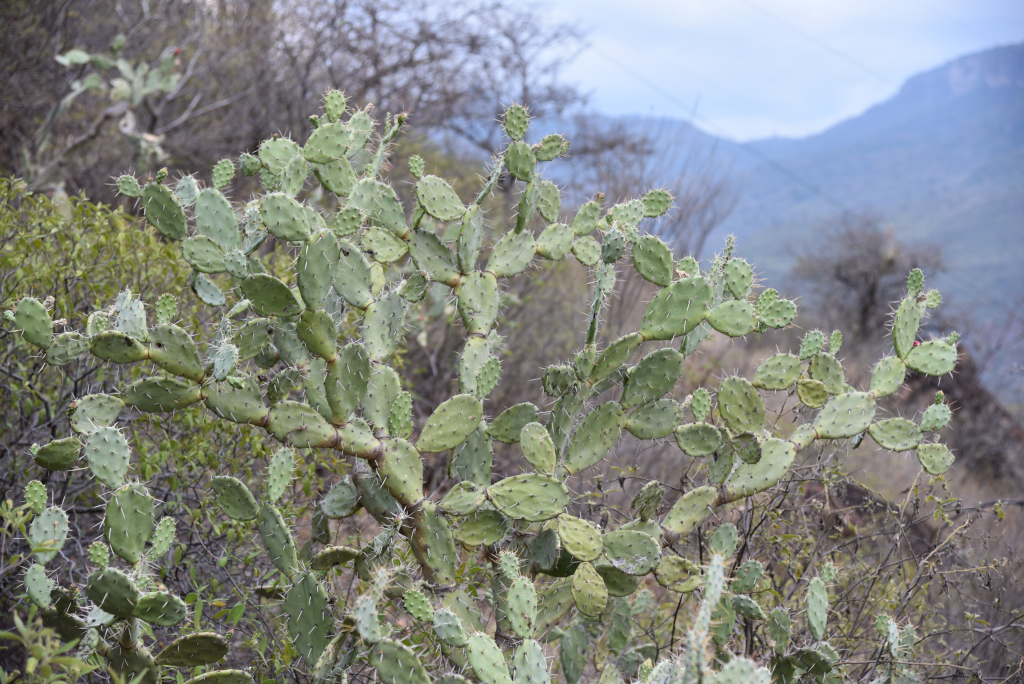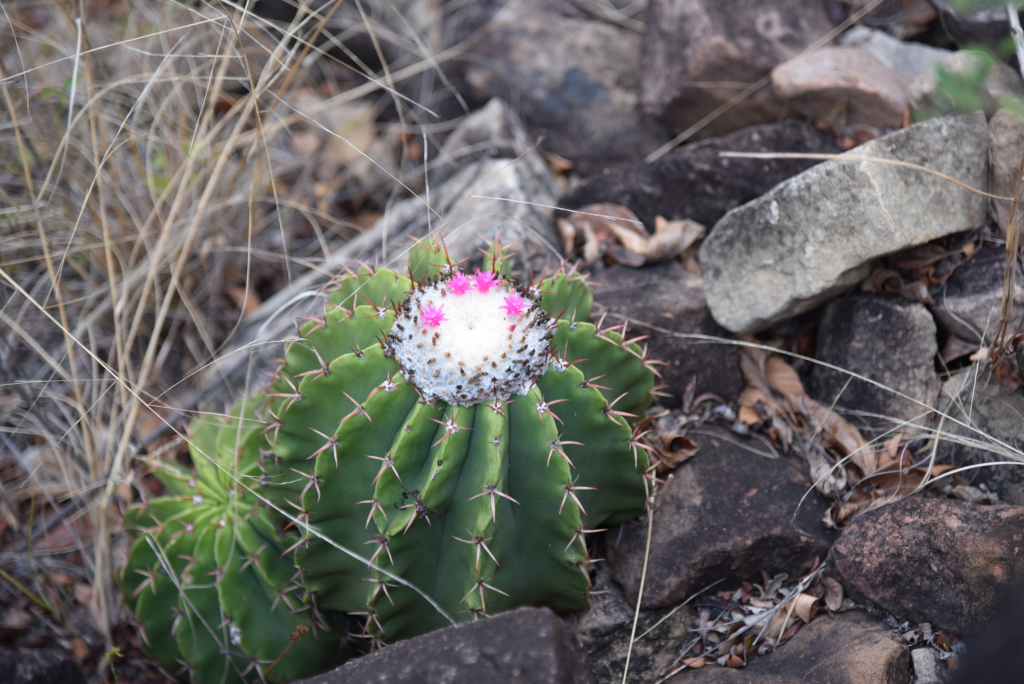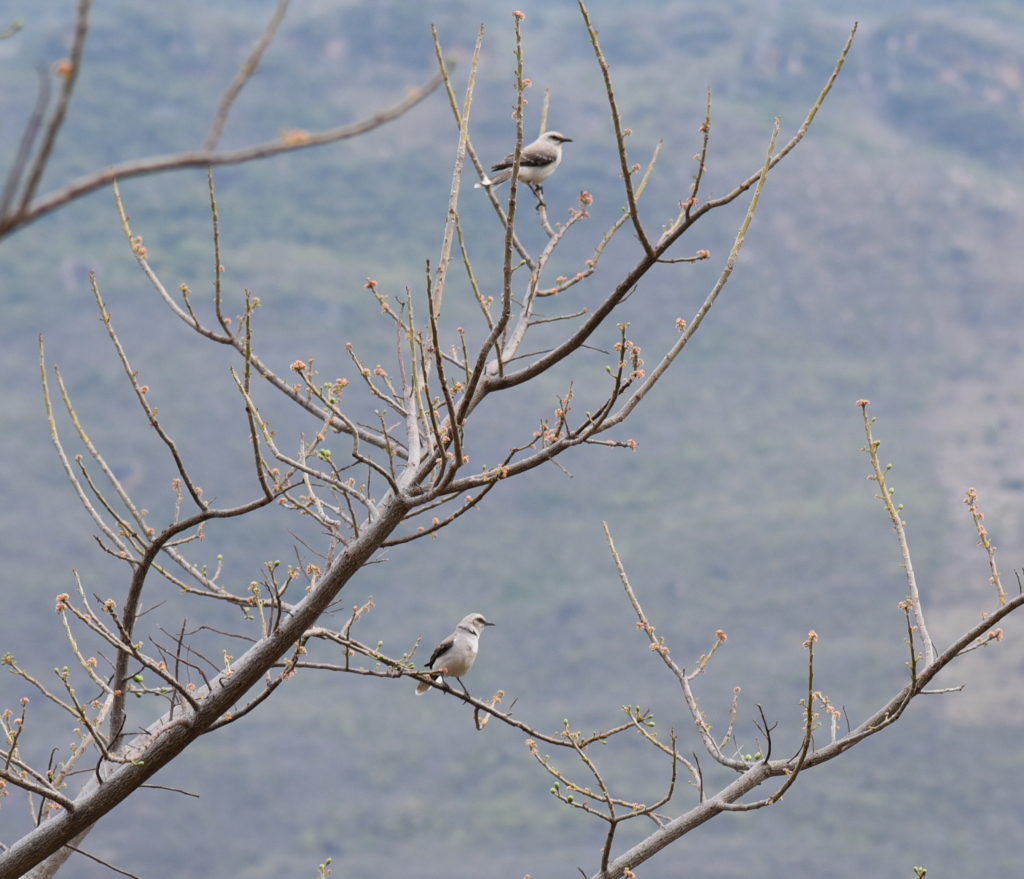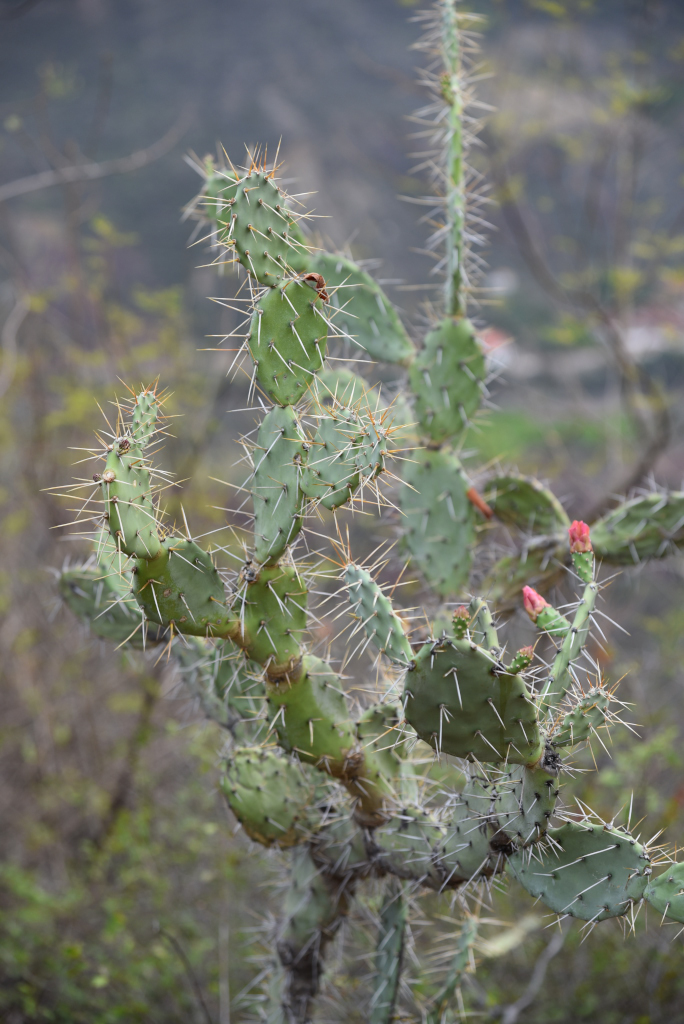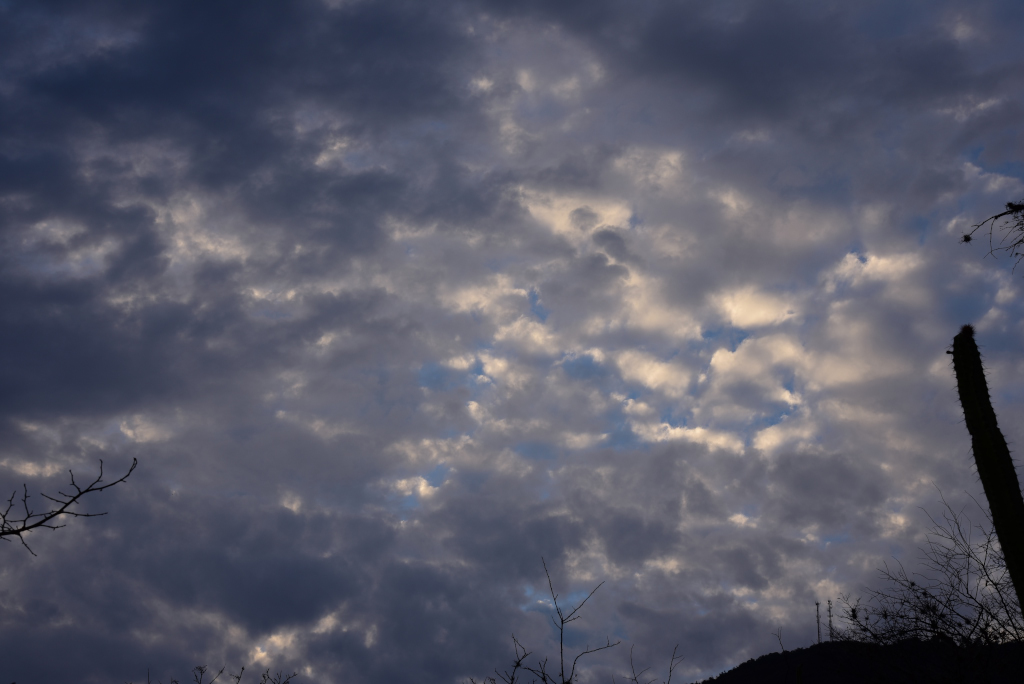February 14, 2018
Morning comes around again as I groggily wake up in my hammock, never an ideal experience with my long frame, but at least there are no other guests to disturb me. The ritual of cleaning up follows using the relatively rudimentary facilities, followed by a hearty breakfast in the kitchen. The two men from Bucaramanga are still here, so naturally another long and leisurely conversation ensues with them. I have big plans for the day, but as usual, the allure of just hanging out in this paradise and undertaking as little as possible provides a powerful countervailing force …
The men speak highly of the quality of the land here, although the idea of attempting to develop agriculture is pointless, given the high cost of transport. In any case, with the advent of free trade with the United States, cheap, industrially-grown crops were dumped on the country, single-handedly destroying the country’s agriculture. What a tragedy! So the focus has to be on high quality, valuable crops that are unique to the region, and can be exported for a profit. The tobacco and coffee grown here is high quality, and generates substantial revenue for the small populace. Other produce may be good for local consumption, but not much else.
The older man speaks authoritatively about life in the llanura, the hot, lowland plains to the north of Santander province. He speaks of his years in a business that his family is gradually assuming control of. He owns a chicken breeding farm, and complains that the quality of chicken he raises is not the same as it used to be, the chicken not the same species, the feed full of impurities and toxins, and the use of synthetic growth production rampant. However, it is not clear as to how much of his distaste for what the industry has experienced is reflected in his own actions, or if he is simply going along with whatever the most profitable route is. It’s hard for me to understand much of his garbled Spanish, although the assistant he is traveling with speaks slightly better.
The ever-congenial Paulo – manager of Shangri-La as well as the cook – tells me the water from the swimming pool is fed into the orange grove on the lot, but the oranges in the end simply rot. Oranges are worth too little to bother selling, which seems utterly tragic. As far as growing other fruit or organics here is concerned, yes, possibly, but at the moment the owner doesn’t seem to care very much, as the Shangri-La project is more of a labour of love than anything else.
Given that he has to go to town to run some errands, Paulo offers to take me on his motorcycle as far as Jordan, which will assist enormously, given that I plan on hiking up to Los Santos, the town on the cliff overlooking Jordan. Escaping the clutches of the local pet goat, we putter along the road winding to the main road, then are off, slowly weaving along the main road towards the big city, the views of the spectacular valley opening up as we rise and then disappear again as the road descends, enveloped in the rich greenery that screens us from sight.
I am pointed to the trail on the far side of the small suspension bridge over the Chicamocha river, then amble along the rocky path past a small cluster of houses, the few locals present eyeing me somewhat suspiciously before I disappear into the bush, the trail rising gradually as it loops back and forth, soon offering views of the town below. The brush around me is dry, the lack of rainfall evident in the parched aspect of the landscape. Higher and higher I climb, really having little sense of how far I will have to climb to reach Los Santos. I was quoted encouraging numbers for the amount of time required to reach the town, but given that I am not the world’s most qualified hiker and that I completed a mammoth hike only two days ago, I may again be taking on more than I had hoped for.
I cross paths with a sombrero-wearing local and his laden pack mule on the trip down the mountain, surprised at suddenly encountering him, and then he is gone, disappearing into the scrub below. The rock-paved path makes for easy walking, but eventually gives way to gravel, becoming increasingly inclined, and hence also more difficult, especially with the growing heat. The sun may not appear to be blazing, given the cloud cover, but it is hot, very hot to be climbing a mountain! The higher I go, the more spectacular the views are of the valley below and the broader Chicamocha canyon.
Steeper, and steeper, and as it goes with climbing mountains, the ascent never seems as punishing from a distance as it becomes the higher you go; just when you think you’re about to reach the summit, the next major escarpment rises above you, and so on. Finally, the valley far below me, Jordan nothing but a collection of specks in the depths of the canyon, the steep trail reaching what appears to be an enormous cliff face towering above. And yes, the path weaves along the face of that steep cliff. I am dismayed, utterly exhausted, not wanting to climb any further. Stopping, I feel the welcome breezes caress my overheated body, and decide to soldier on. I have encountered no further trace of civilization on this trail other than the man driving his mule below and a house with aggressively barking dogs, now also far below me.
Lumbering laboriously up the face of the last cliff, I hope and pray that this is it. I am drenched with sweat, utterly dehydrated, never mind exhausted. I hear voices, and a few individuals pass me on the trail. I can see the top of the cliff above me, gradually coming into focus, now rapidly approaching. And around the last bend, trudging belatedly along the last segment, and suddenly I am in a small clearing, peering down an alley lined with whitewashed houses: this is it! I have arrived in Los Santos!
Now in town, there is no evidence of the precipitous canyon face I climbed up on the immediate perimeter of town. And the citizens of Los Santos hardly look like they spend their time climbing in and out of the Chicamocha canyon – but then what would I know! I am just happy to be here, a few blocks from the end of the trail the pretty, terraced parque with cathedral that marks the centre of town, the primary restaurants, the activities of the movers and shakers, and unfortunately also the buses belching black smoke coming from and returning to Bucaramanga, the bustling tropical city to the north that is capital of the Santander department. Around the corner from the parque, miracle of miracles, I discover a fresh juice shop, where I rehydrate with seeming gallons of juice from every manner of tropical fruit.
Having now drunk numerous juices and bottles of water, I am back to a relatively functional state. With my camera I embark on a shooting frenzy of the town, which really amounts to nothing more than a few unimpressive blocks radiating the picturesque central square. The town has a remote but romantic feel to it, the surrounding landscape rolling, the green hills rising around the whitewashed town crowned with terracotta roofs like giant waves on the sea. Consistent with the charm found in small towns in much of the highland region, the narrow streets of the town rise and fall, outside of the main plaza virtually no one to be seen, or for that matter, next to no stores, restaurants or any other establishments visible. Los Santos is quite similar in its look and feel to the towns of Boyaca to the south – and to the east – except that the surrounding landscape is not as lush.
The stepped main square makes up for the rest of the town, rising up to the impressive cathedral and its clock tower, the black wrought-iron lamps framed against the whitewashed adobe walls. The visually-catching painted window and door sashes seen in other historic towns in the country are in evidence here, bright red, green and yellow splashed against the white. Three young cyclists sit next to their bikes, apparently having cycled here from Bucaramanga for the day – very impressive! The cyclists are a reminder of how passionate Colombians are about cycling, although it is something seen primarily in the more temperate but also mountainous highland terrain of the country. That said, I would find the polluting exhaust fumes of the unregulated vehicles punishing for cycling here, not the mountainous topography.
As luck would have it, the local police decide to aggressively question me because I had the audacity to take photos of what turns out to be the police station, which is hardly that clearly marked. I explain to the officers that I was aiming for the huge flag hung above the building, which no, is not often visible in the country. The argument proceeds aggressively and sets a negative tone to the experience of the visit to Los Santos, the reality of petty officialdom always an annoyance in developing countries, particularly in inconsequential backwaters where the police have very little to do.
I am later told that the ELN guerilla group apparently coordinated a bombing of a bridge in Bucaramanga recently, which would explain why the police are so on edge. As peaceful as particularly rural areas in the country may seem in passing, the threat of violence is not far from the surface, be it due to insurgencies, skirmishes between commercial interests and indigenous groups, turf wars between dug traffickers, or day-to-day ever-present crime.
According to a plaque posted on the square, Simón Bolívar (El Libertador) passed through the town on numerous campaigns, although it seems somewhat unlikely, as the canyon to the south is a huge obstacle to transit. It turns out that there are numerous other small, remote towns in the country in areas unlikely to be touched by tourism that Bolívar’s troops also passed through.
The afternoon is waning, and it is time to return to my abode in the canyon below. Despite the return journey being much easier than the ascent to Los Santos, it will nonetheless be a long trip, particularly since I have another several kilometres to continue past Jordan to return to Shangri-La. Prior to the descent, I return to the small shop around the corner from the parque, where the recently-arrived Venezuelan set up his juice shop, serving every manner of local tropical fruit in juice form for a modest price. I am in heaven, what with the various combinations of mango, pineapple, papaya, soursop, tomate de arbol, watermelon and passion fruit cocktails I can ingest prior to embarking on another arduous hike in the intense heat.
Not long on the trail, several horsemen gallop past me, their young charges running after them on foot. These action shots are always unexpected and the camera too slow to come out of my pack to do the experience visual justice – but I try! Another challenge lies in attempting to capture images of the chattering birds flocking to the trees on the trail around me. But the effort becomes another exercise in squandering time, inasmuch as approaching the vicinity of a tree the avian subject matter is perched on invariably sees the birds vanishing deeper into the foliage, or flying off altogether.
Enough: I need to continue, as alluring as the nature is and the obviously spectacular landscape of the canyon around me. Details of the river and the town of Jordan emerge in the haze as I descend, and despite advancing at a much more rapid pace than when I climbed up earlier on the day, the distance is still great. Back and forth, back and forth on the winding curves of the path towards the valley below, the steep gravel path morphing into the rocky trail of the Camino Real, and then the first cluster of houses that marks the beginnings of Jordan. I march purposefully through the town, then on to the road running westward through the valley towards Shangri-La. And as luck would have it, some kilometre out of town, Paulo putters up to me on his motorcycle, all-too-happy to carry me the last distance back to Shangri-La.

